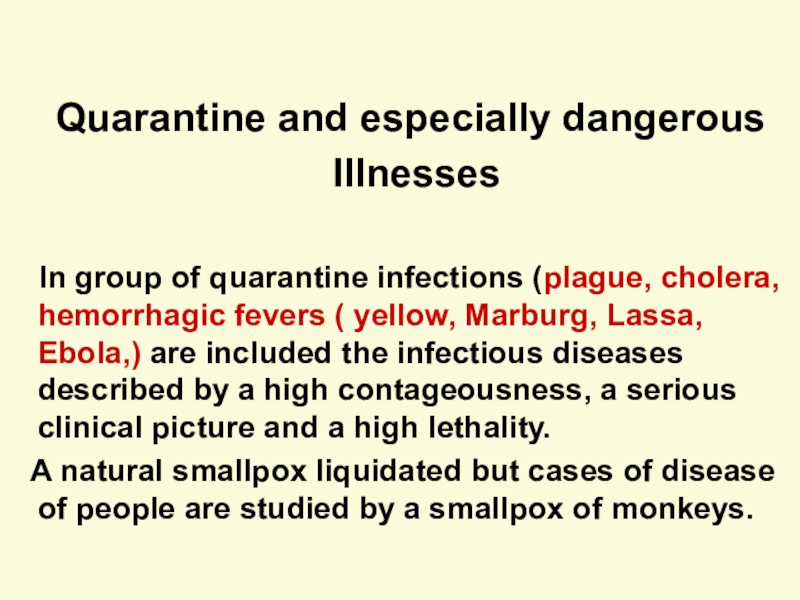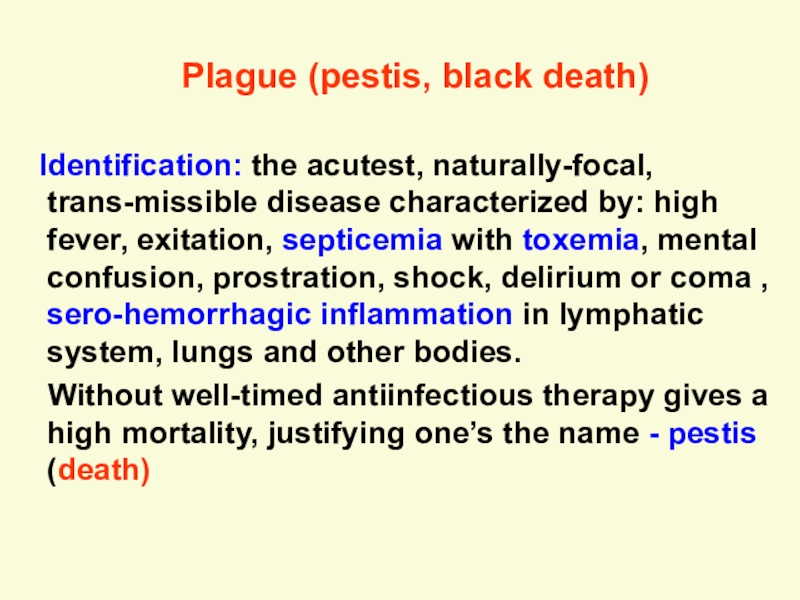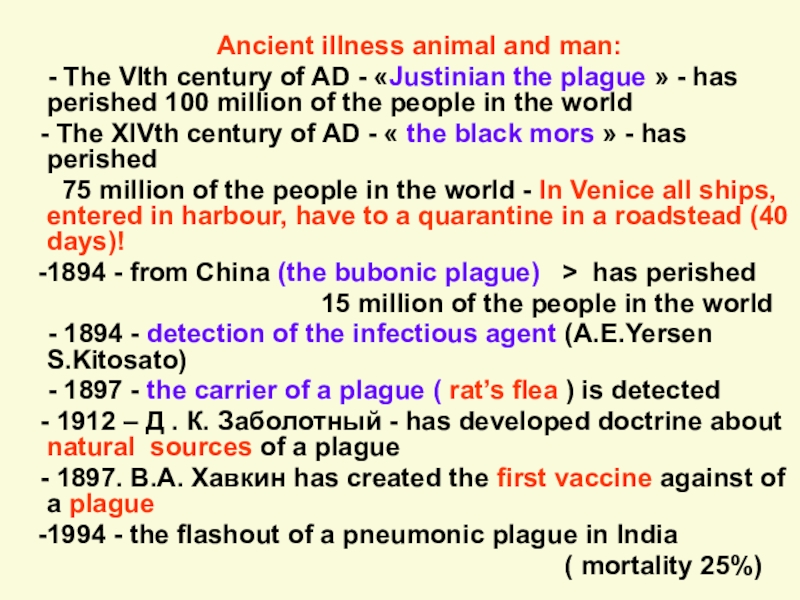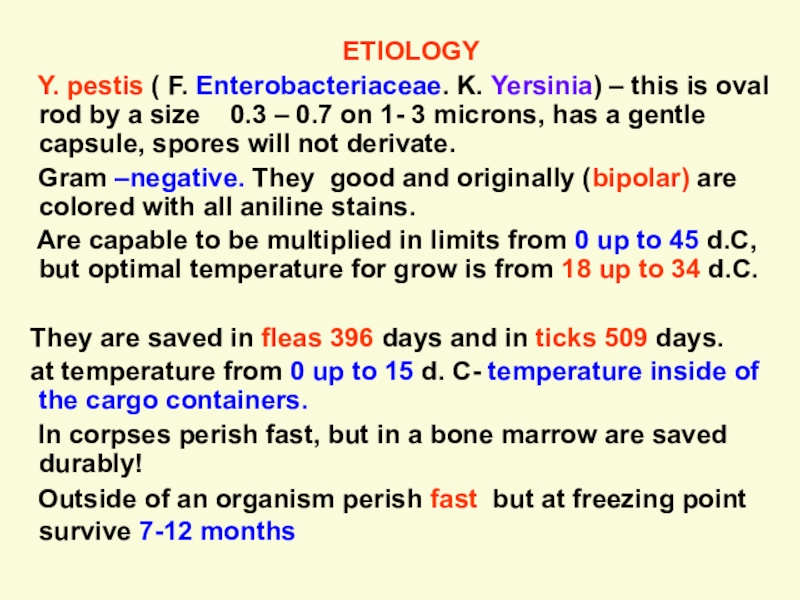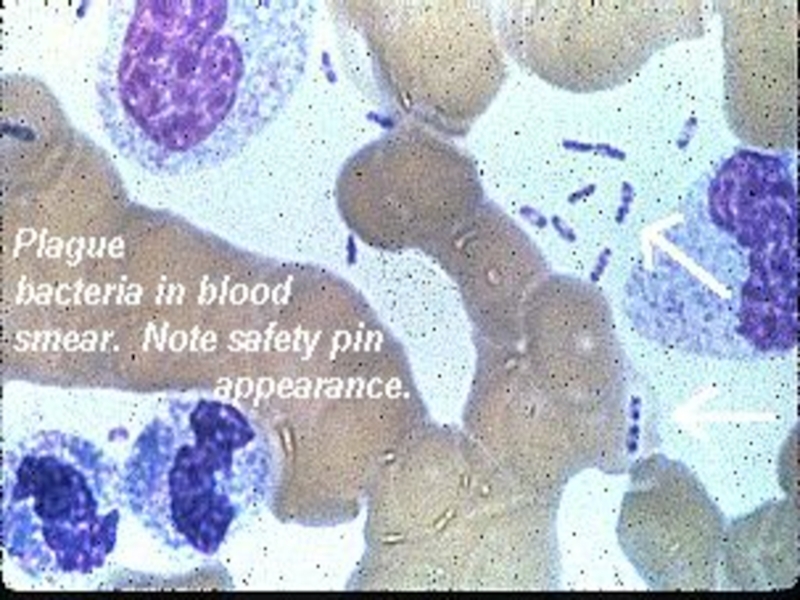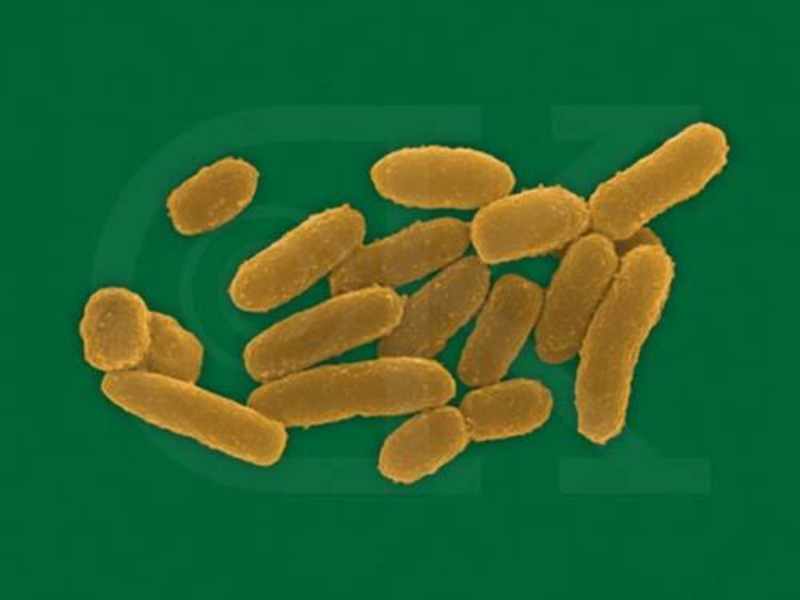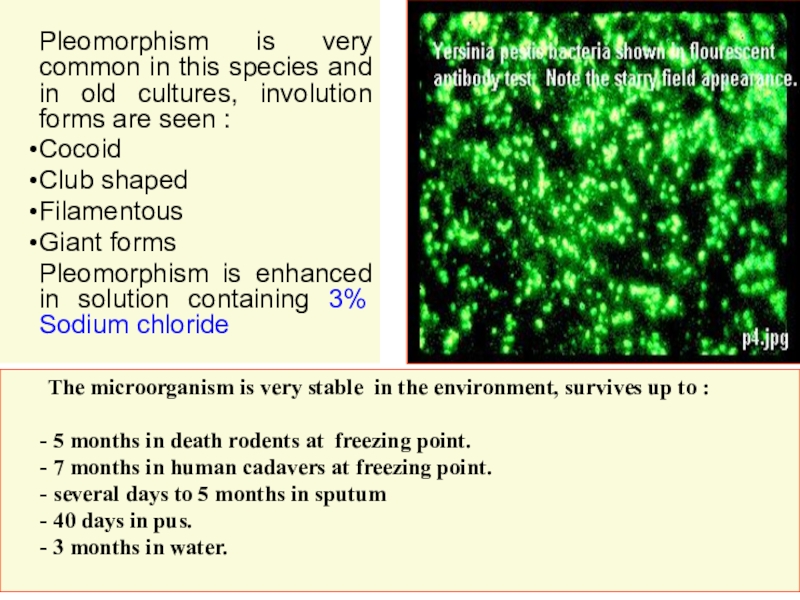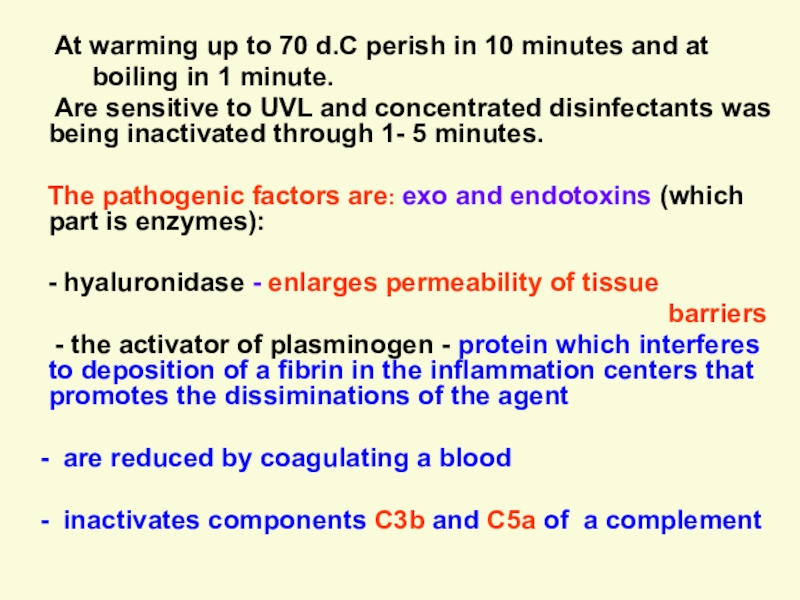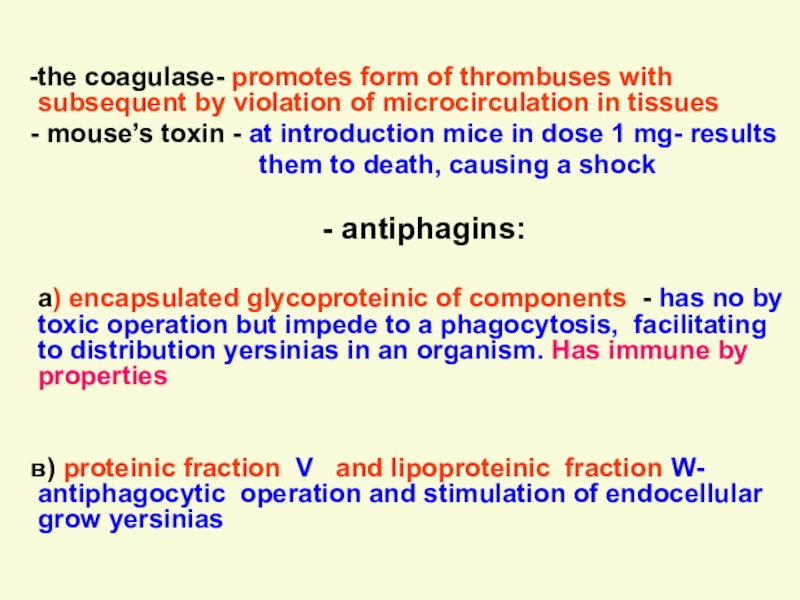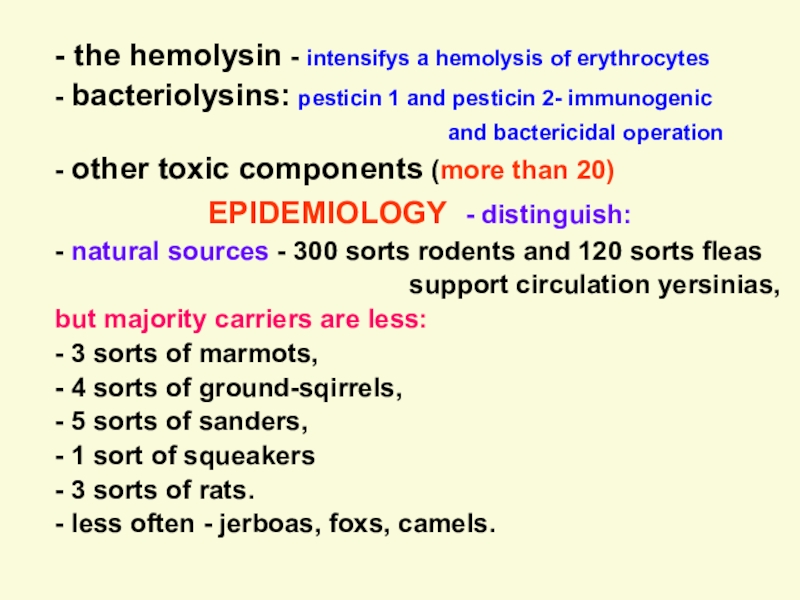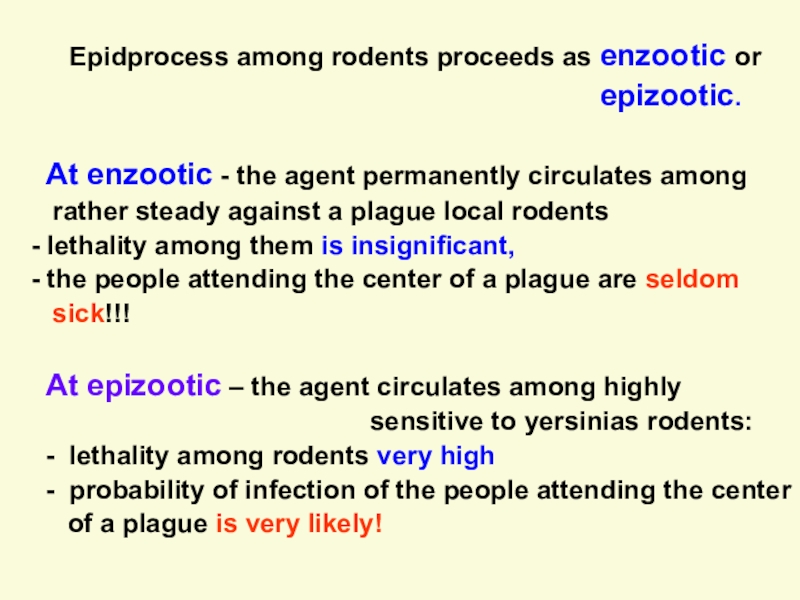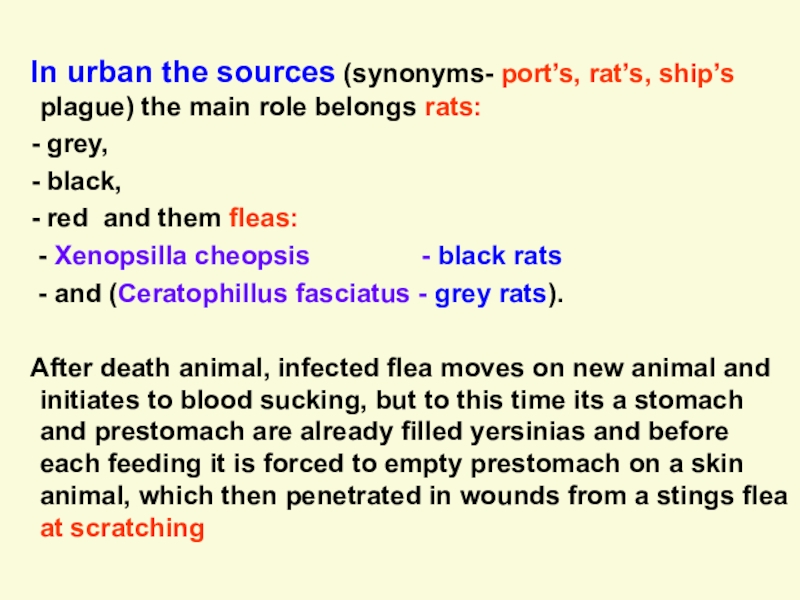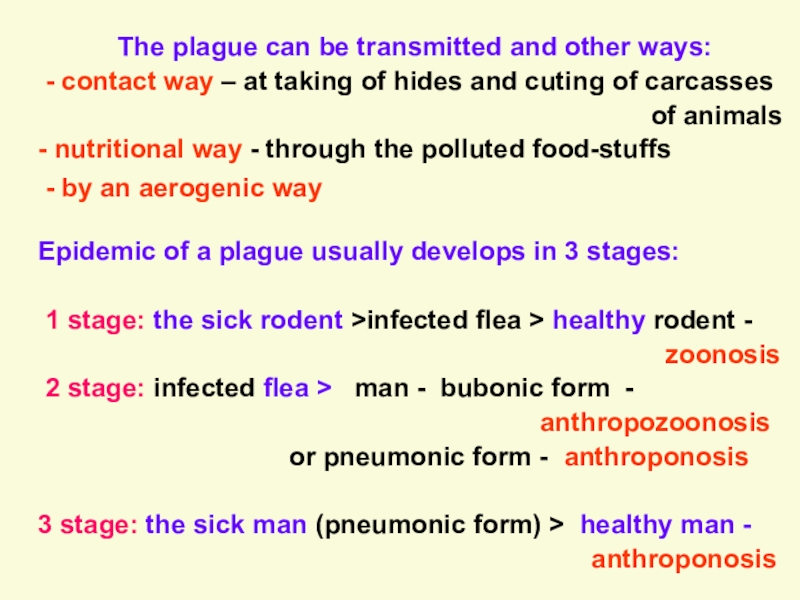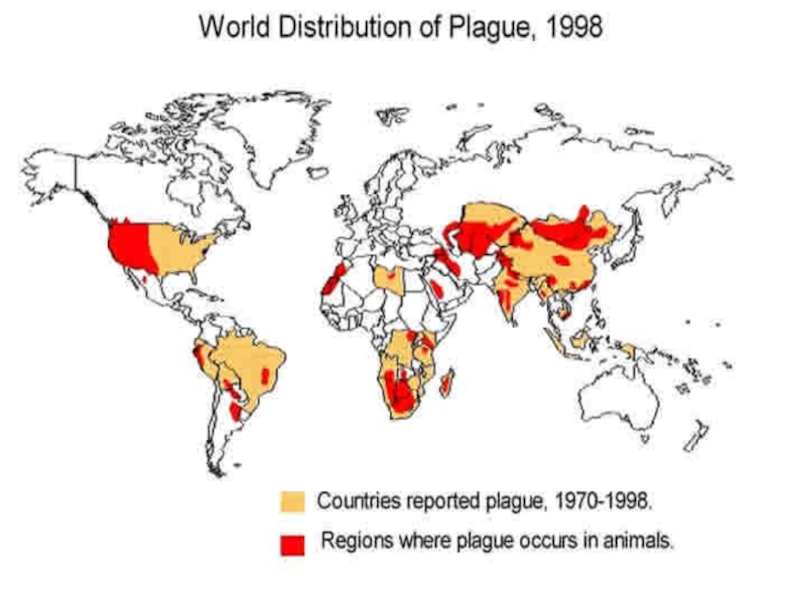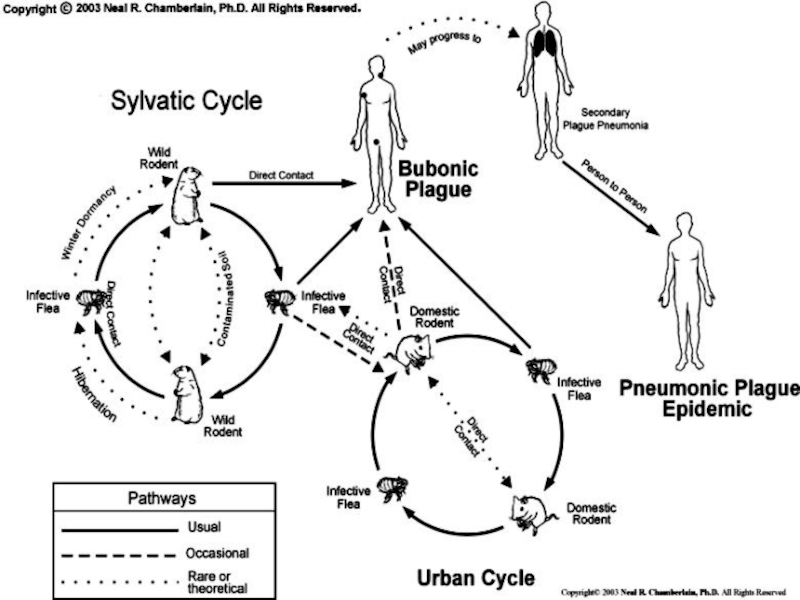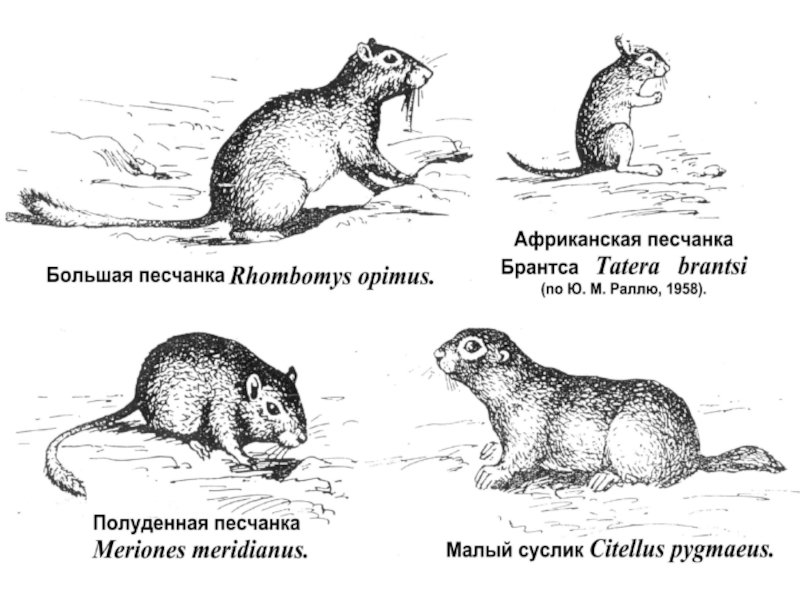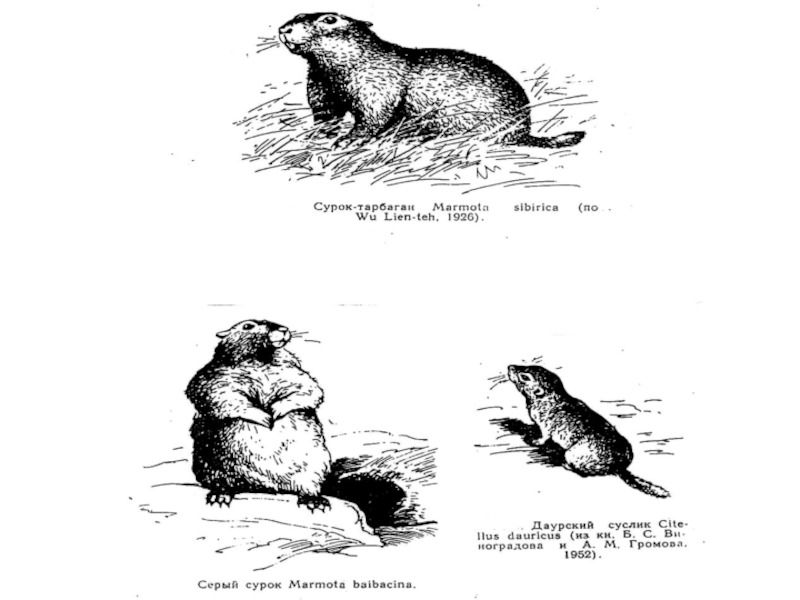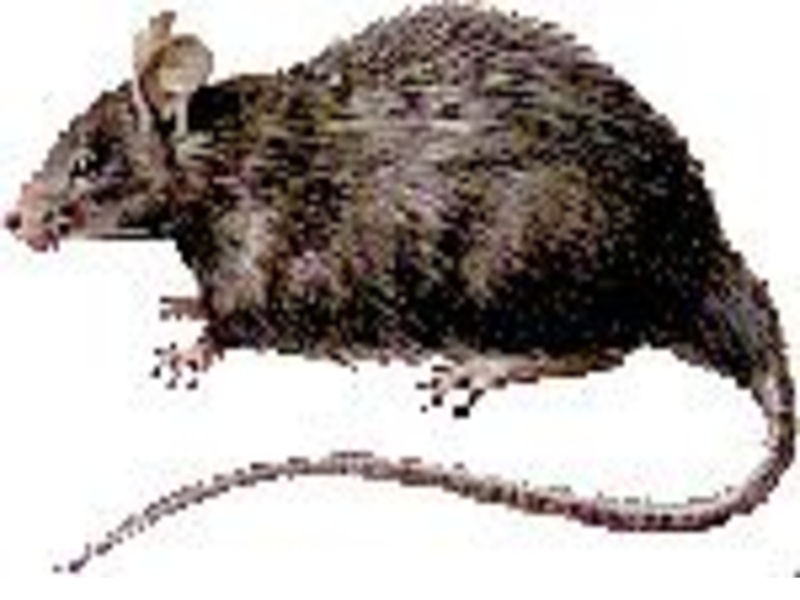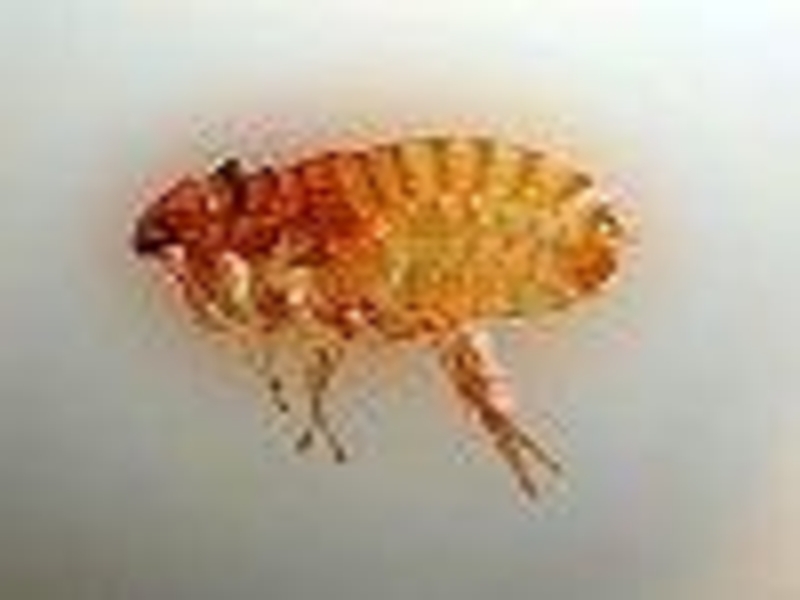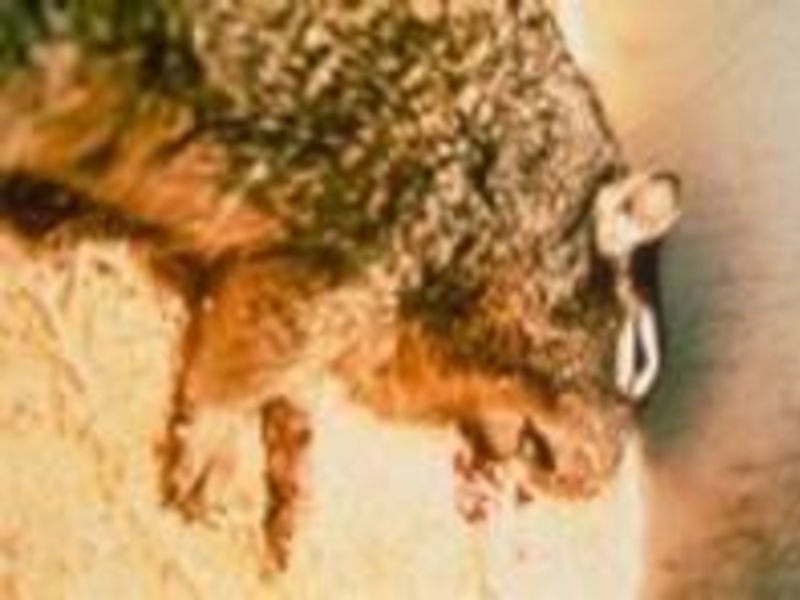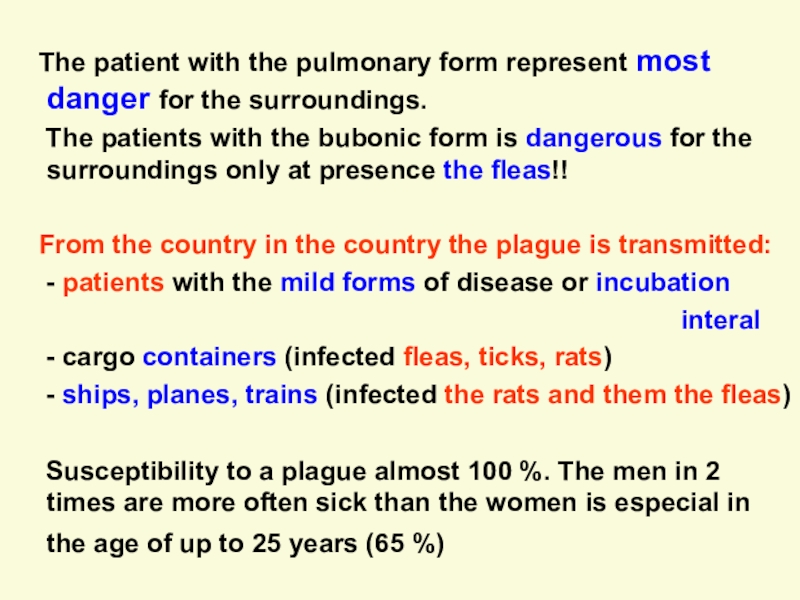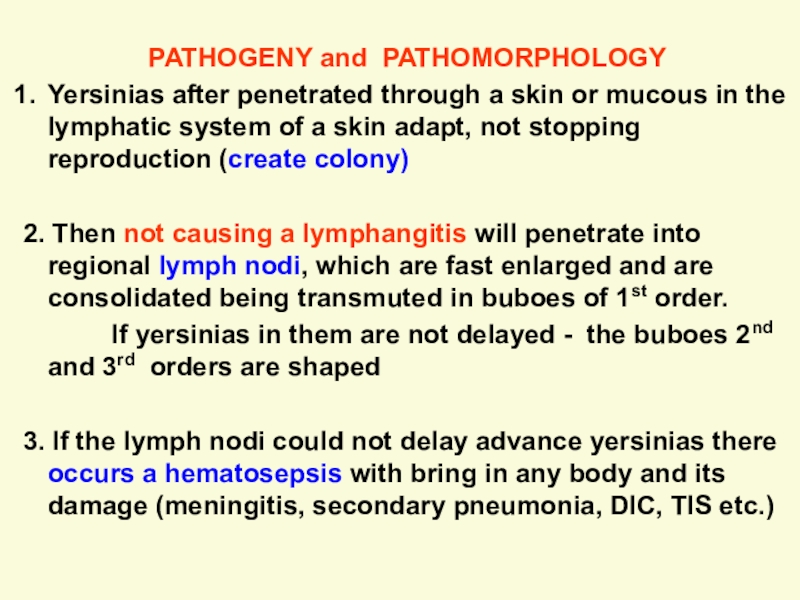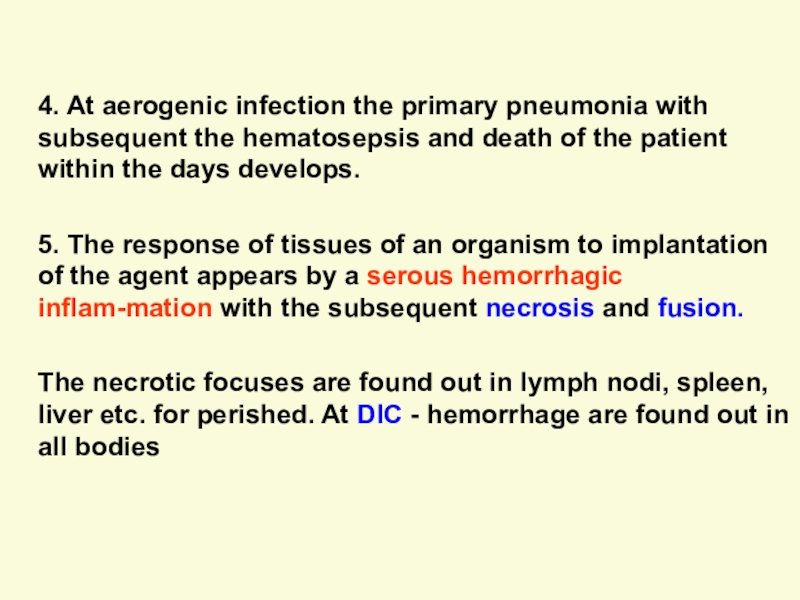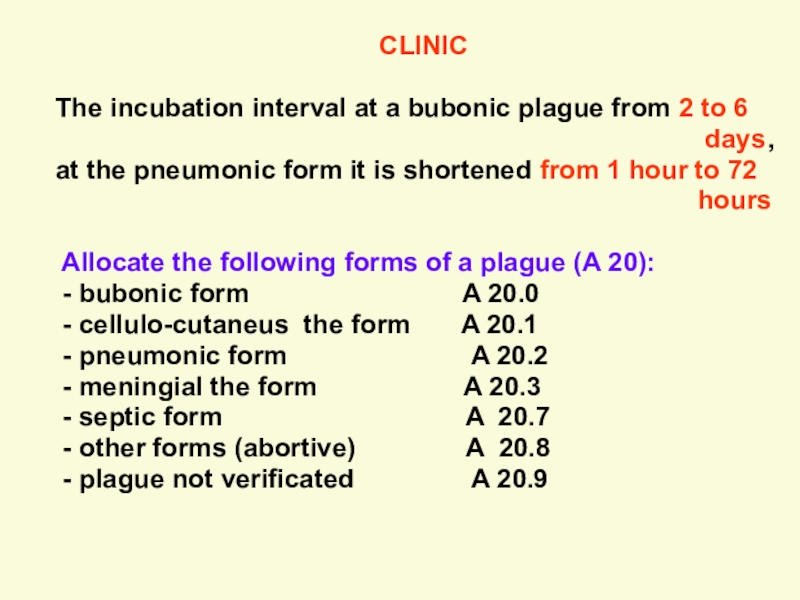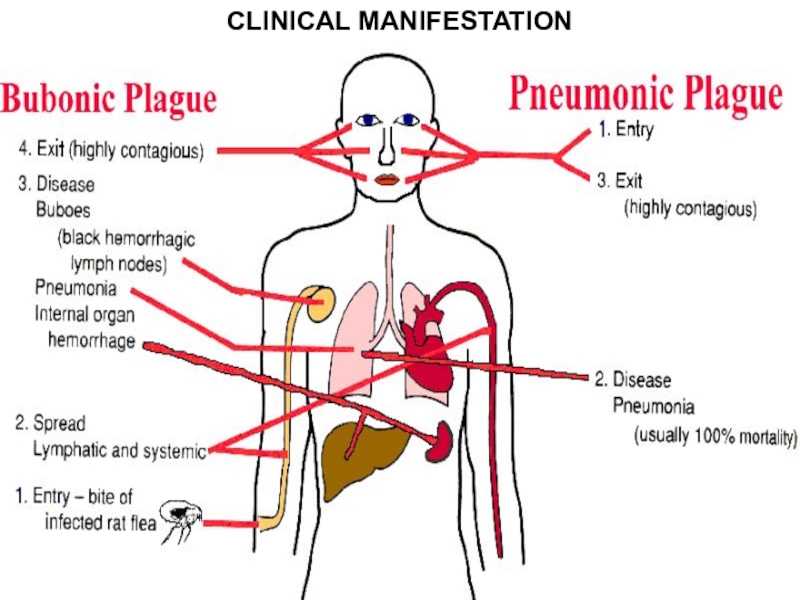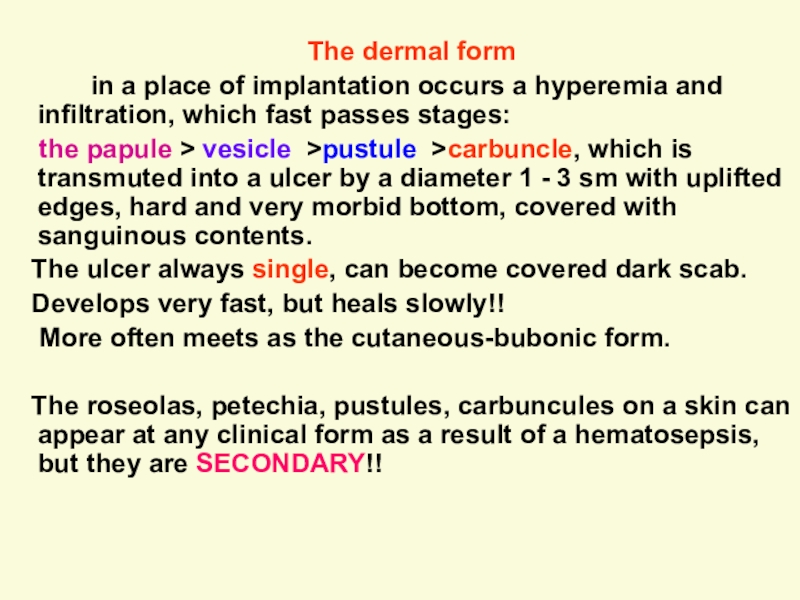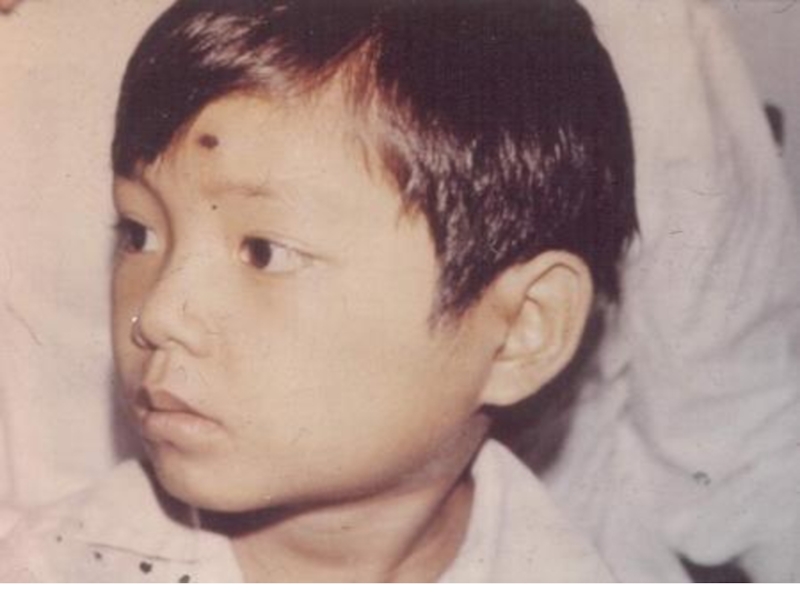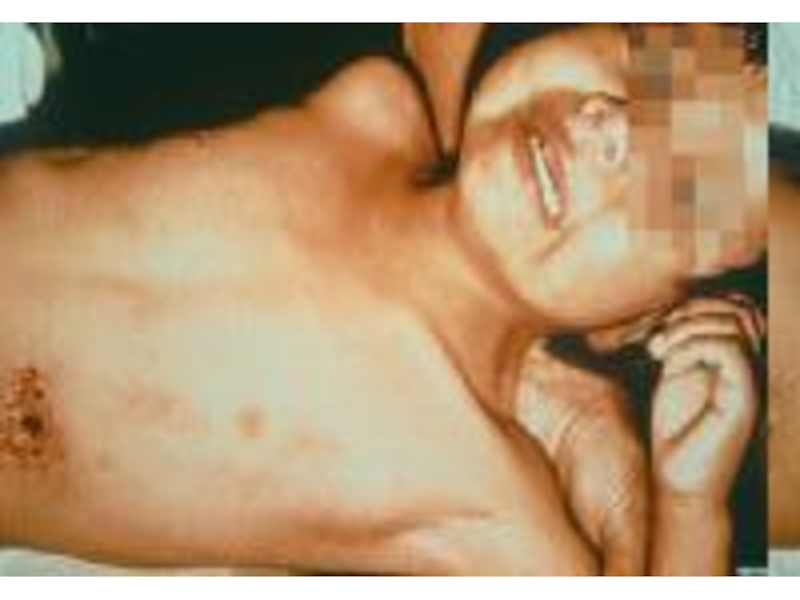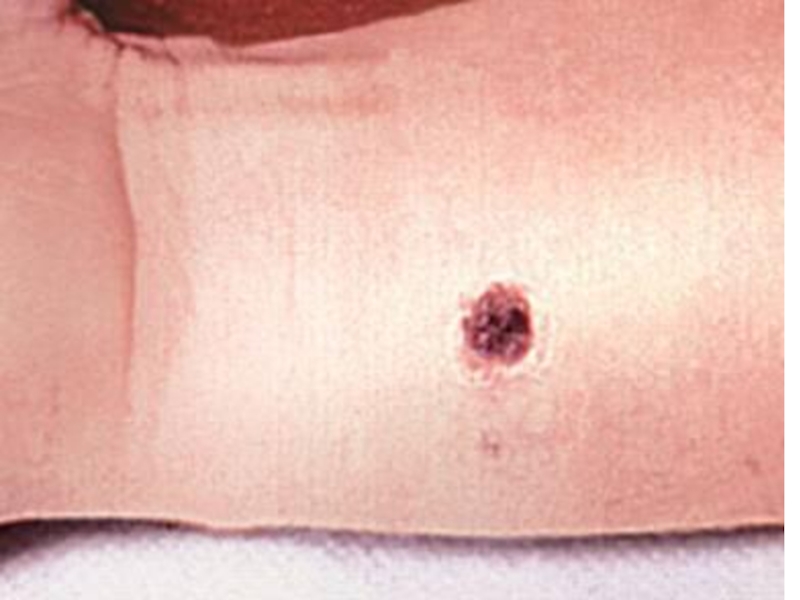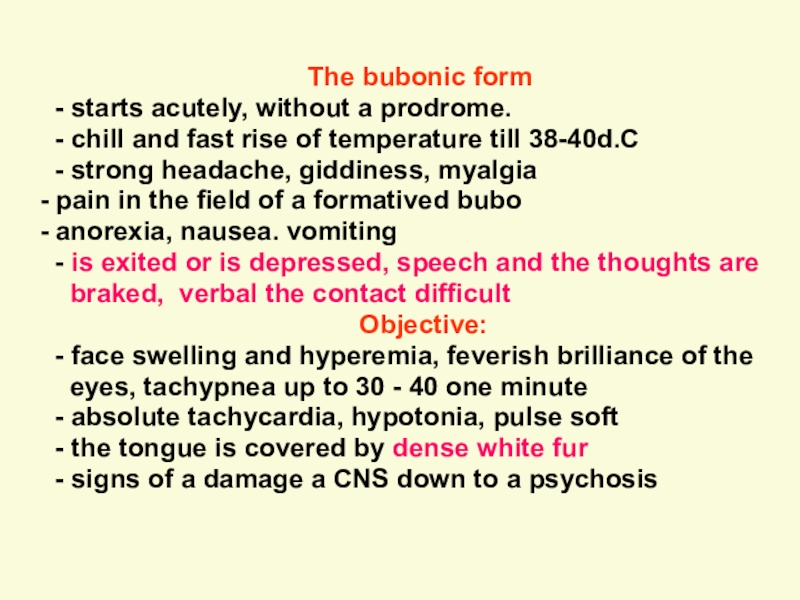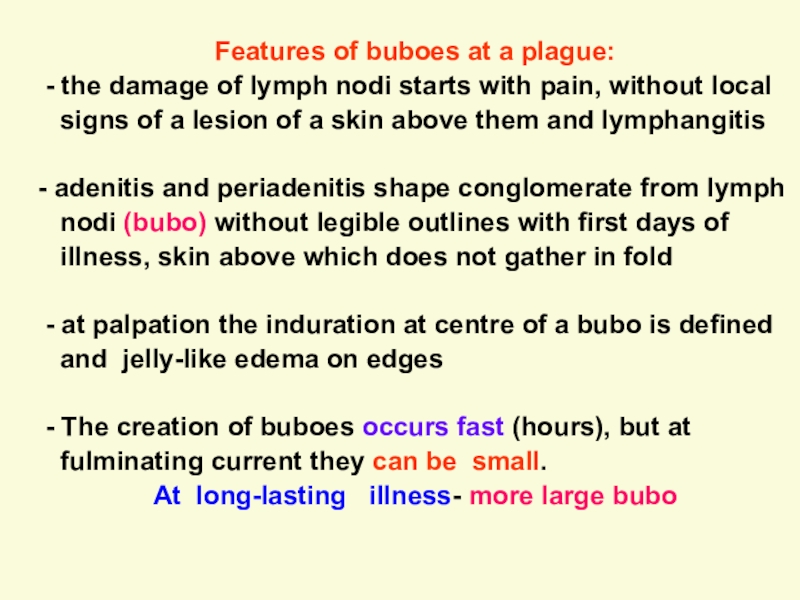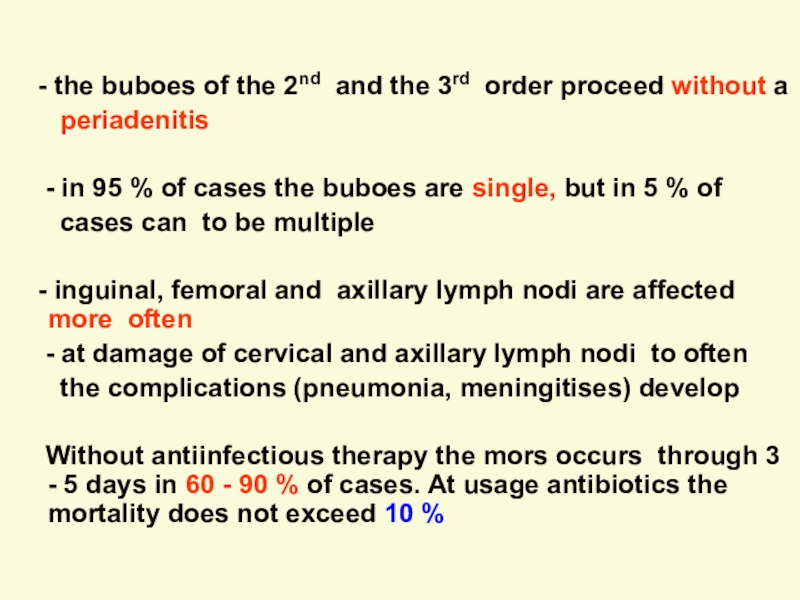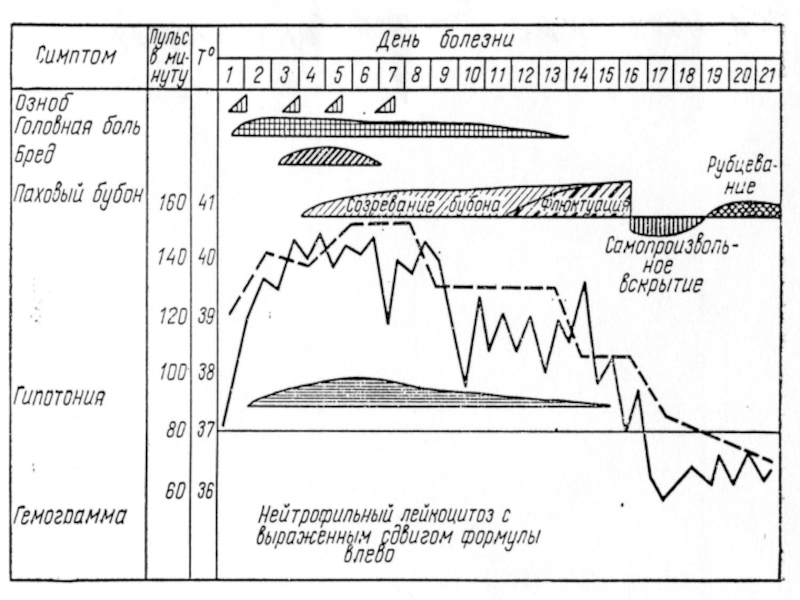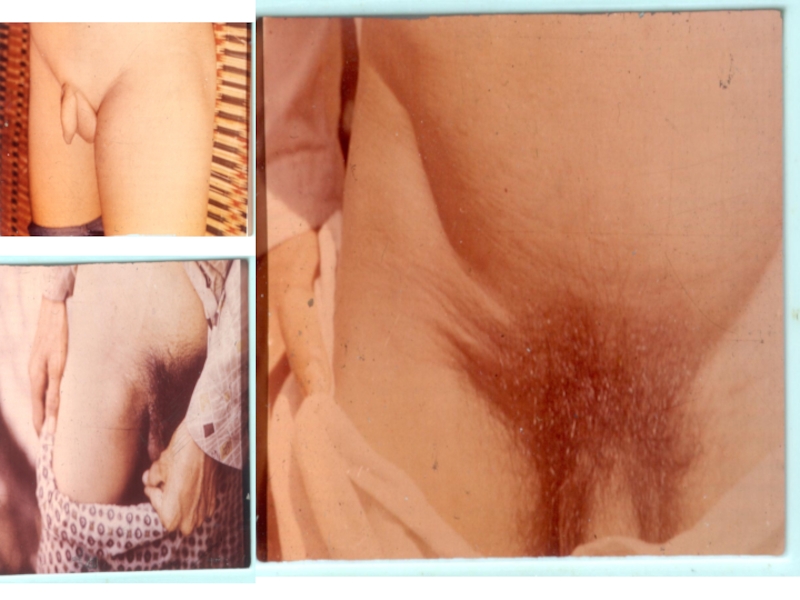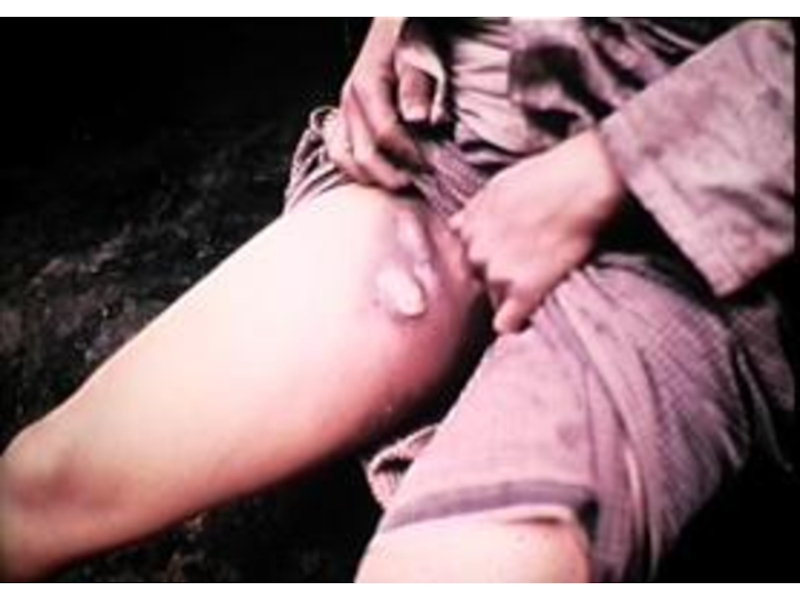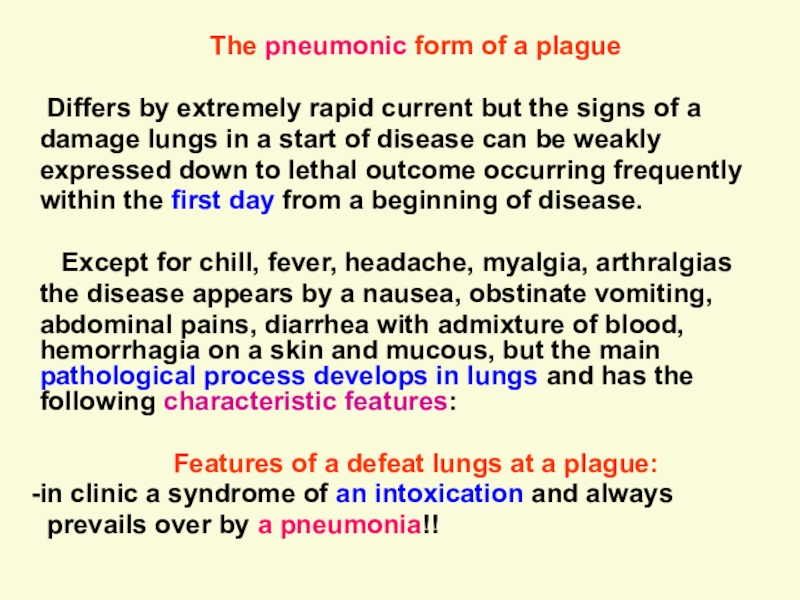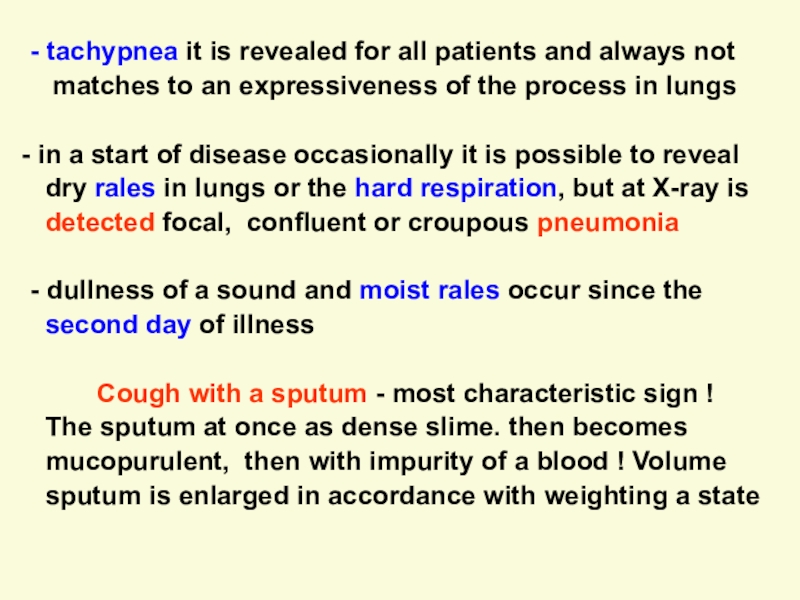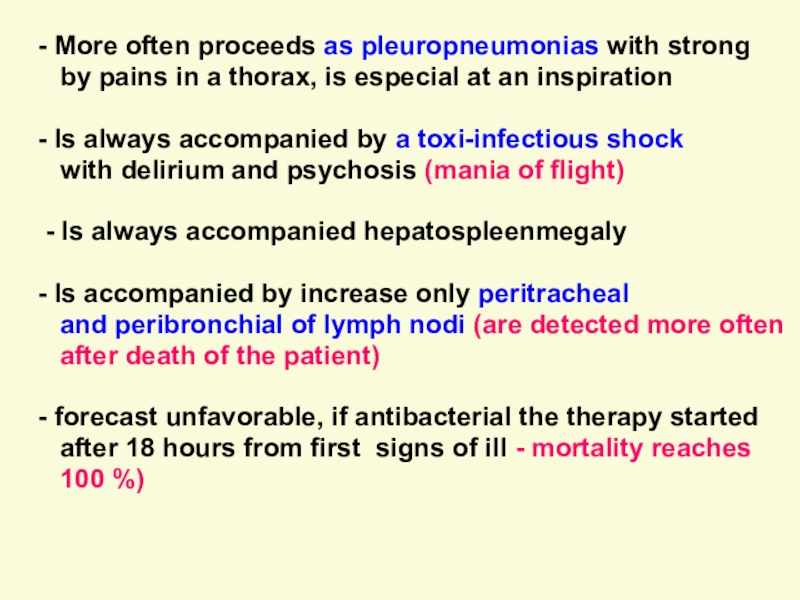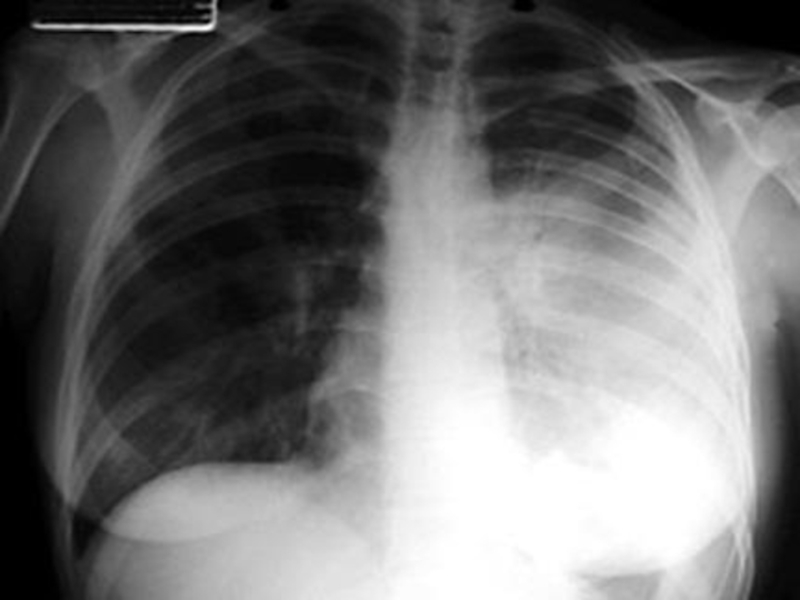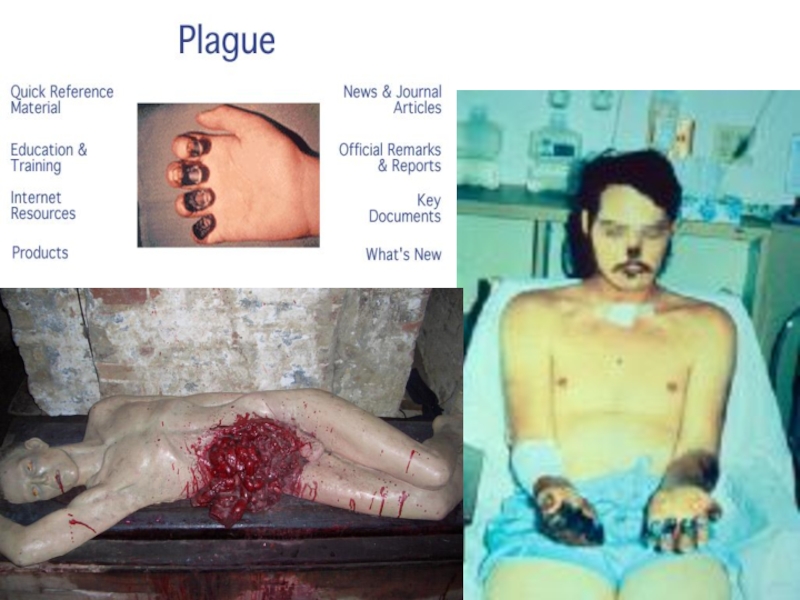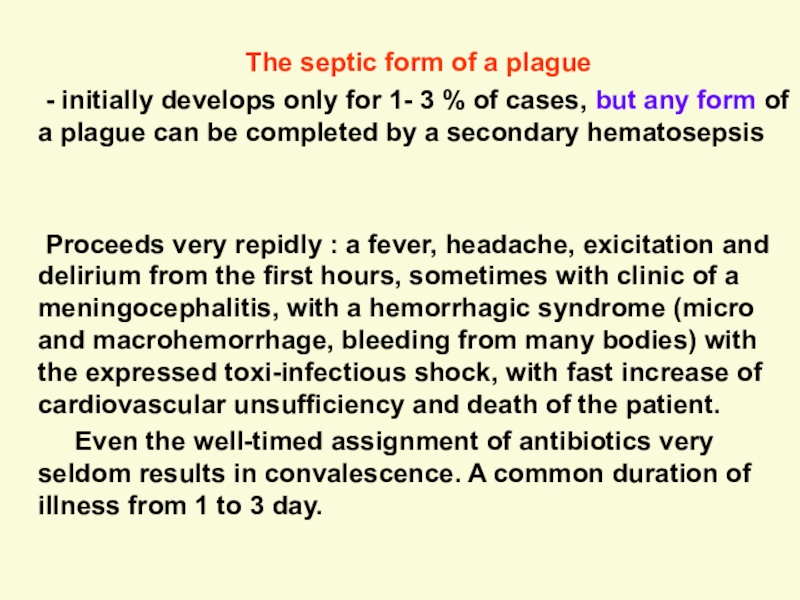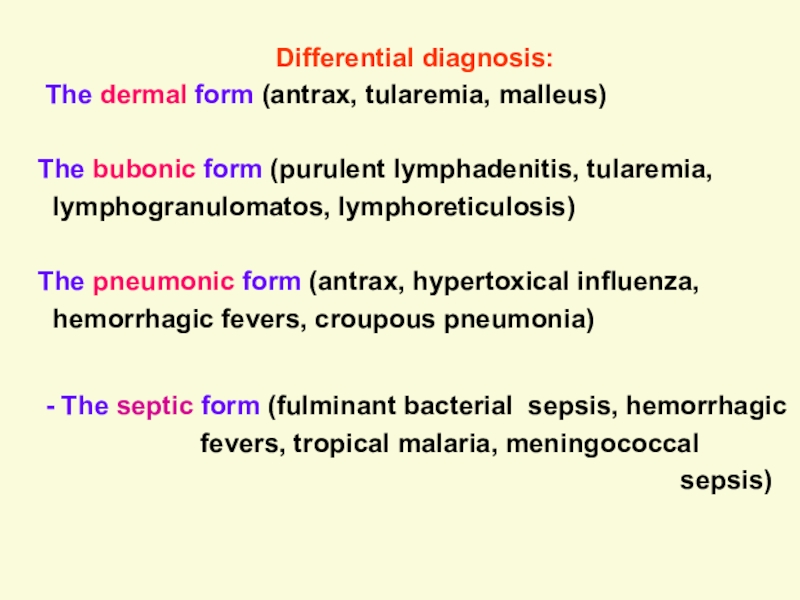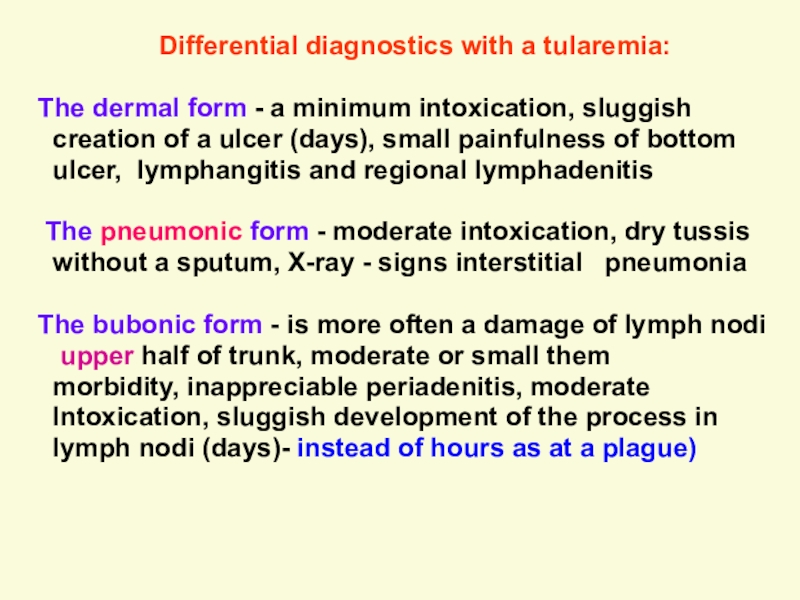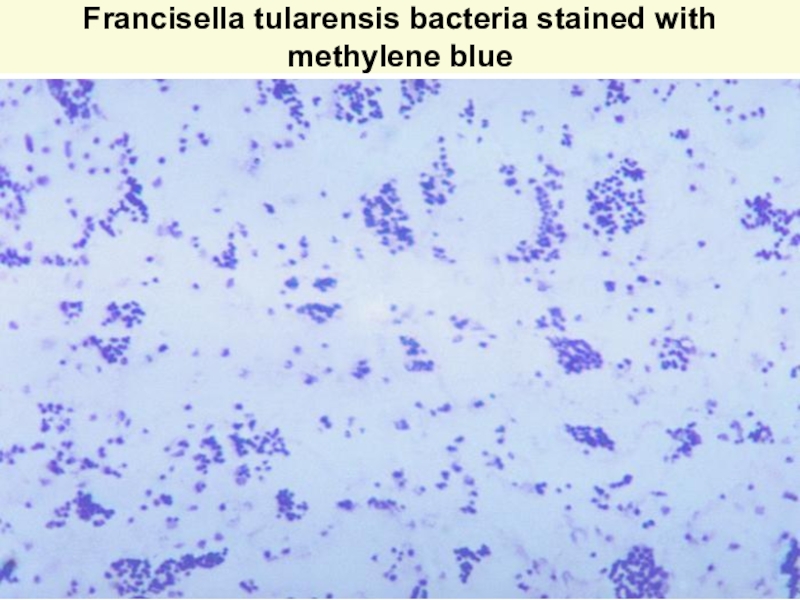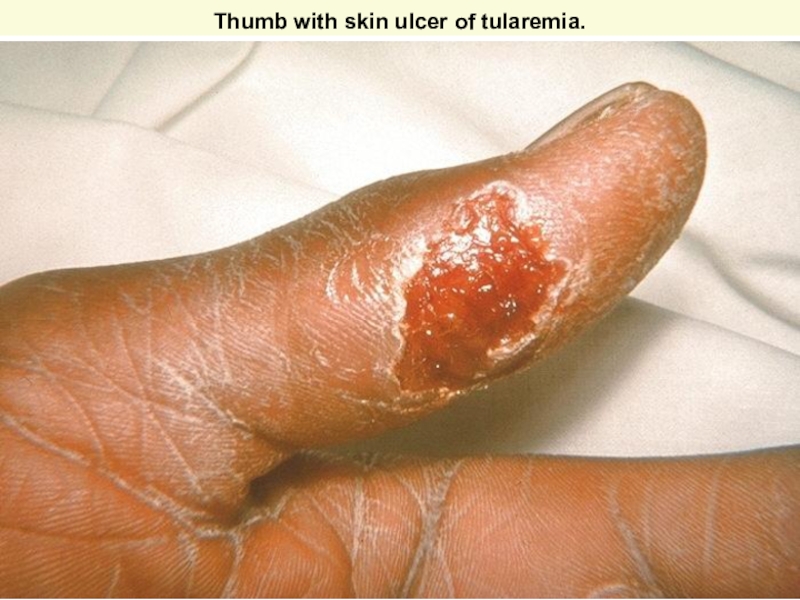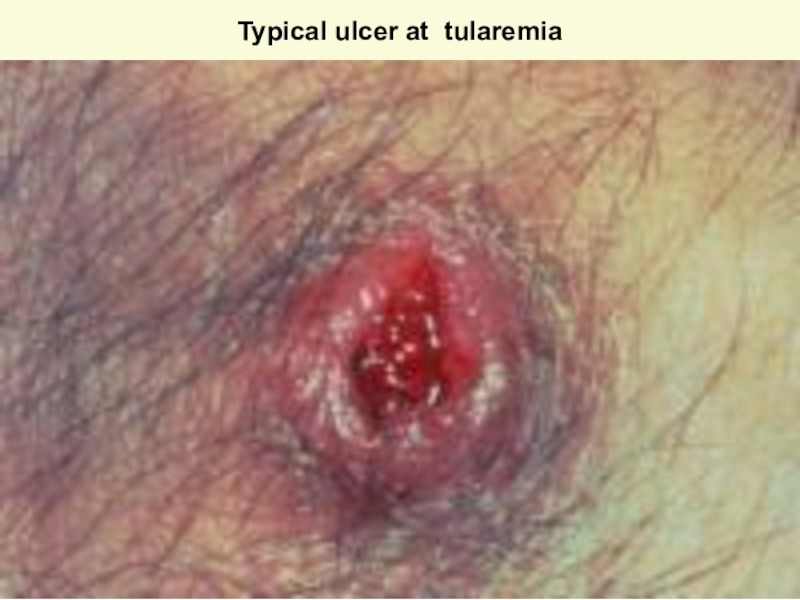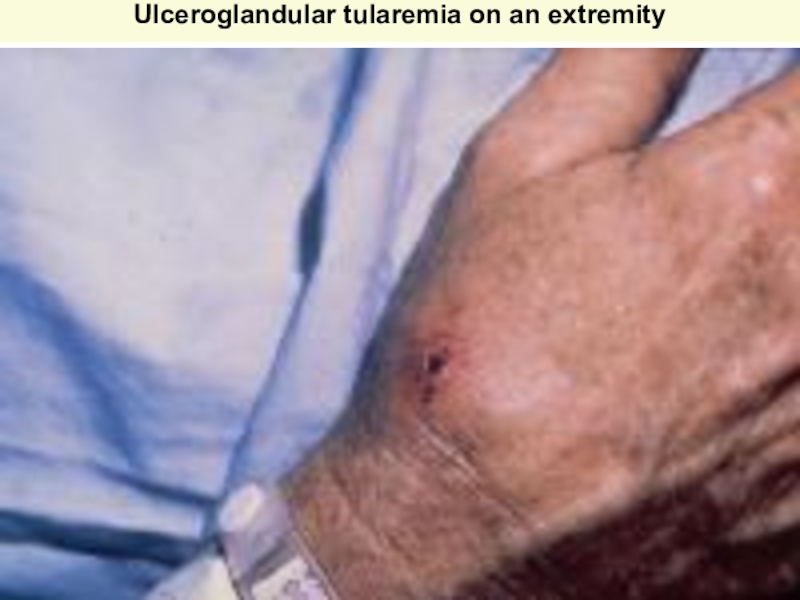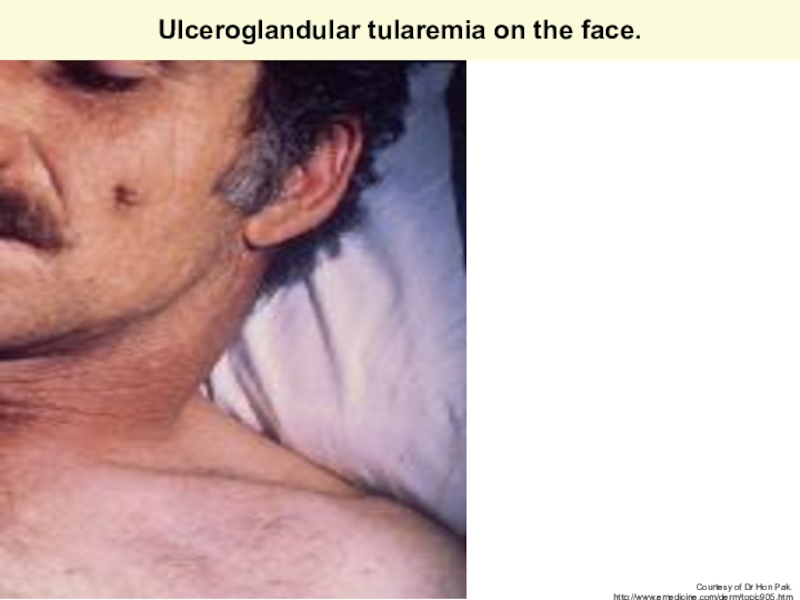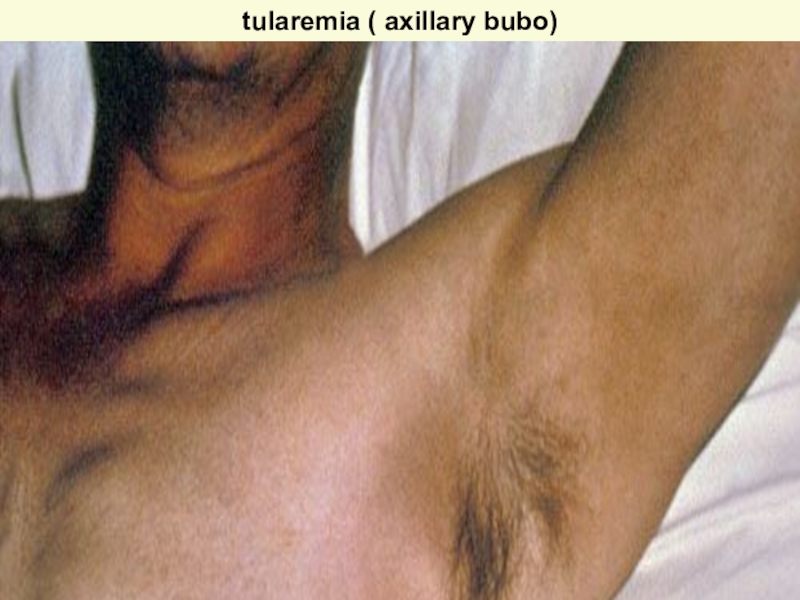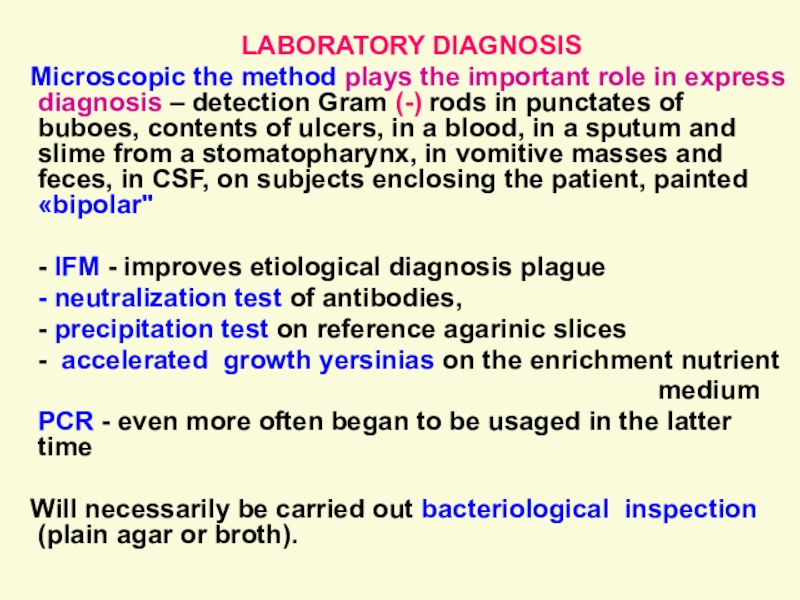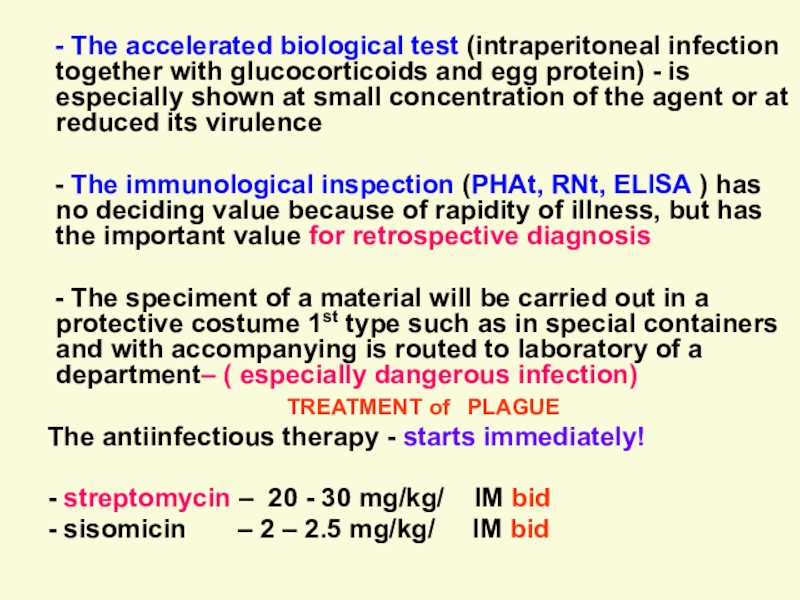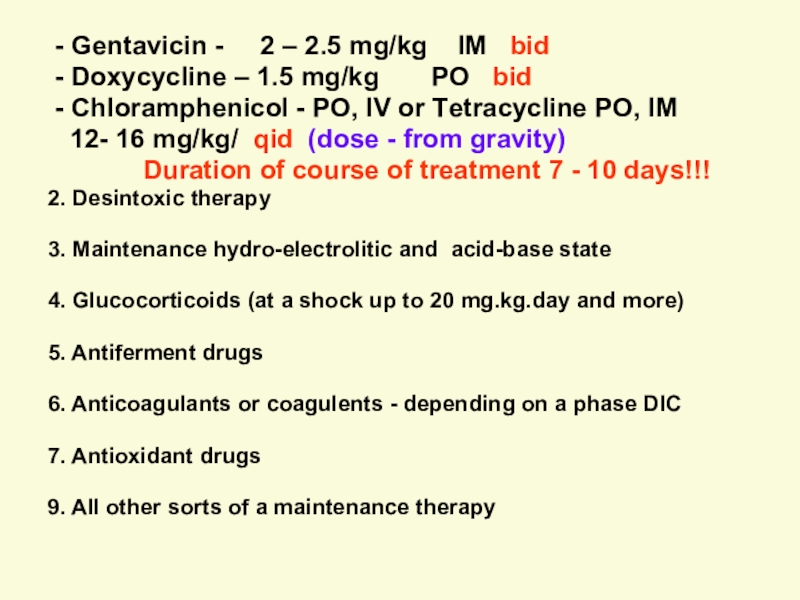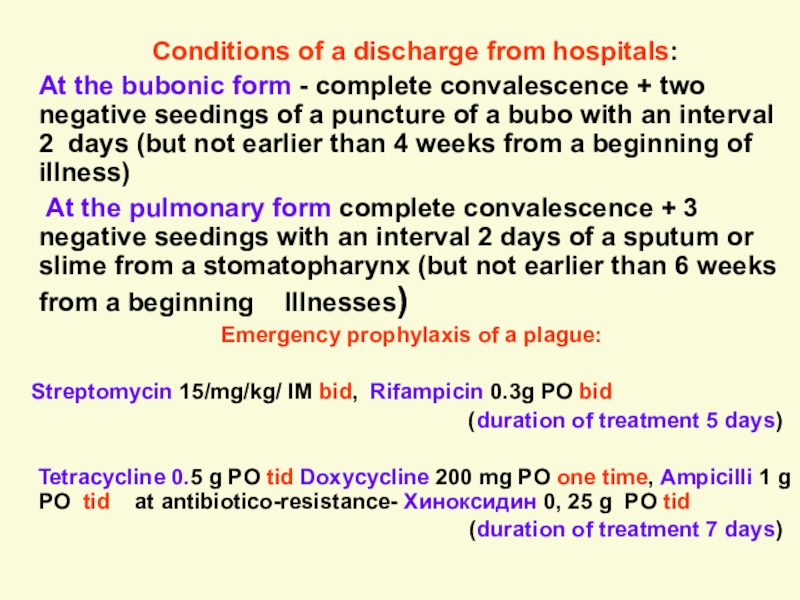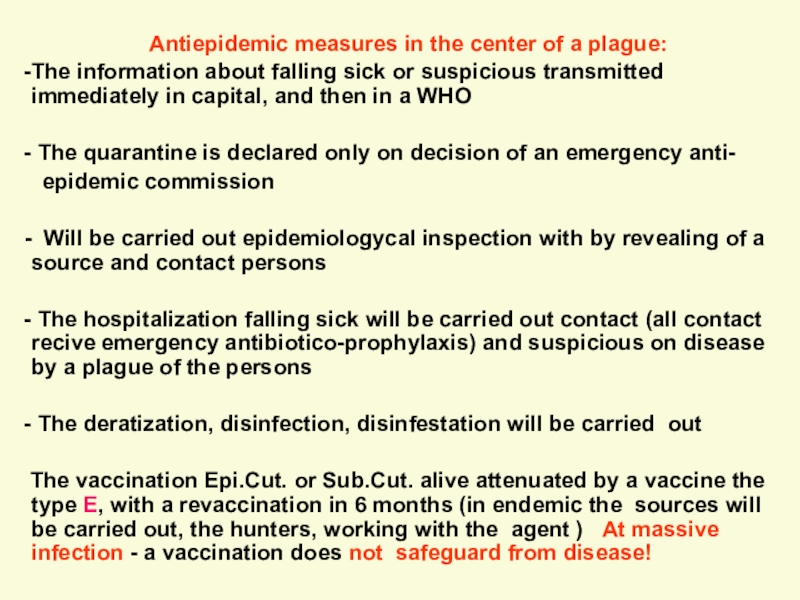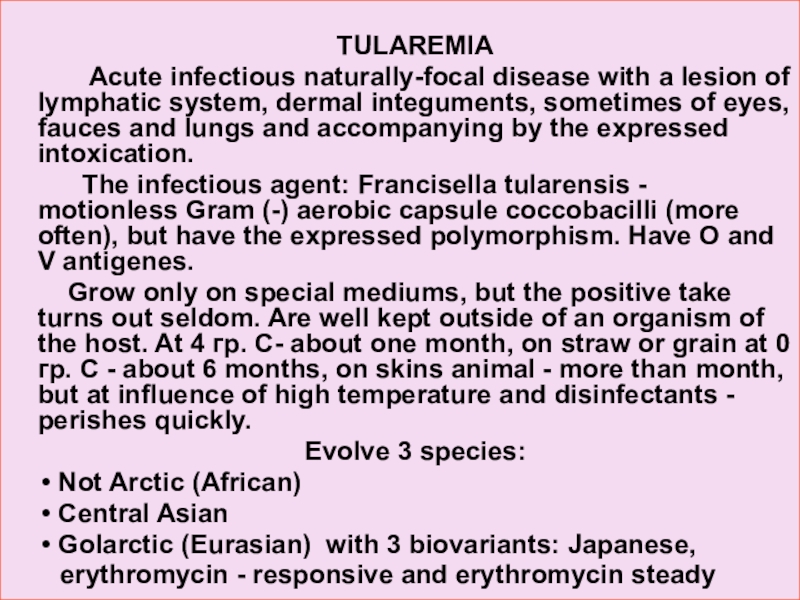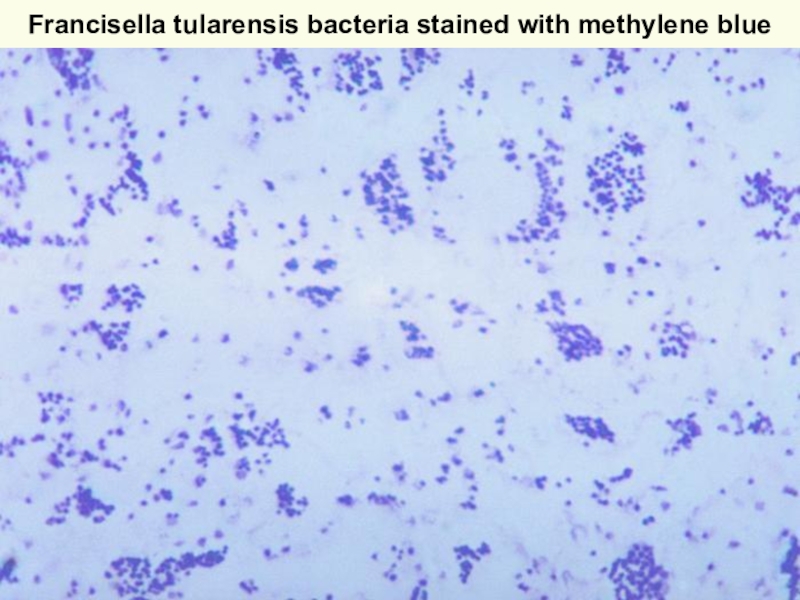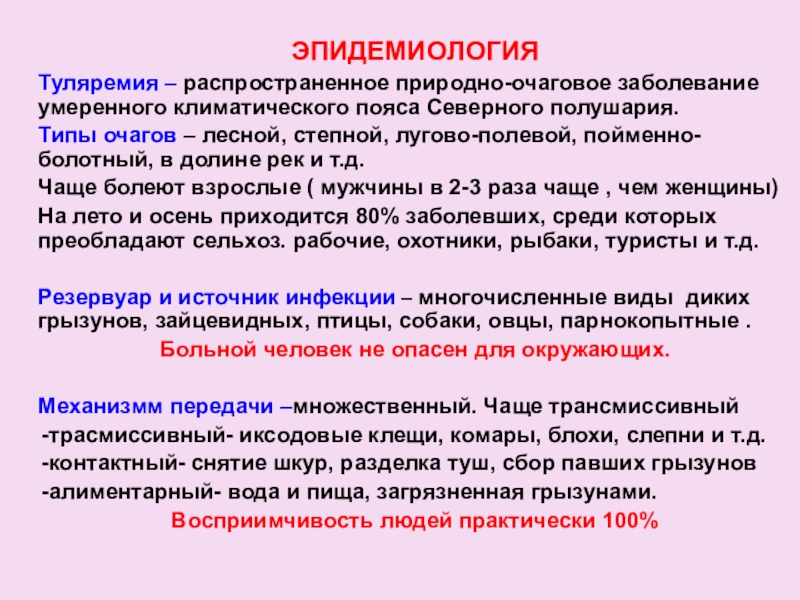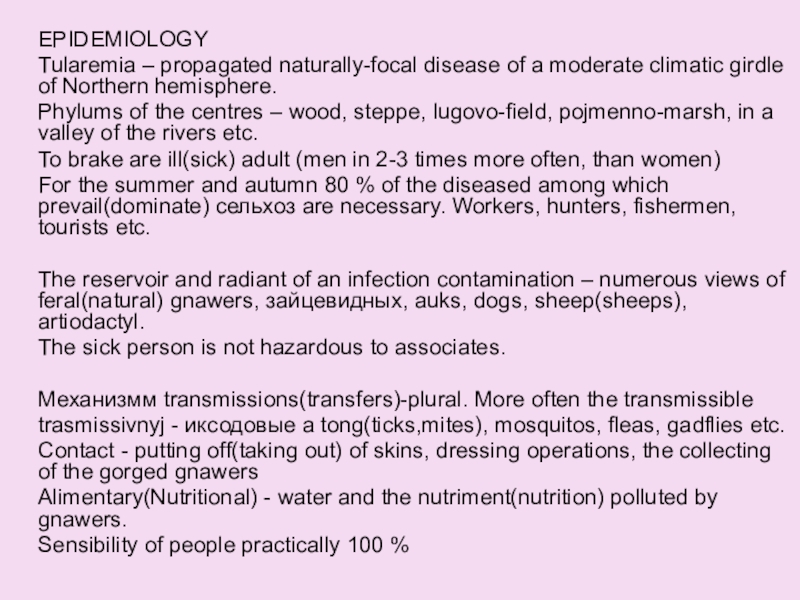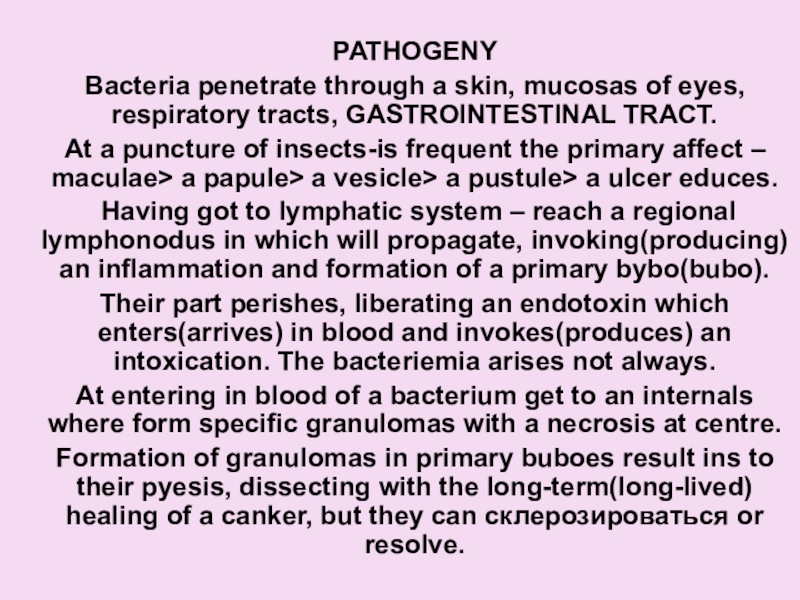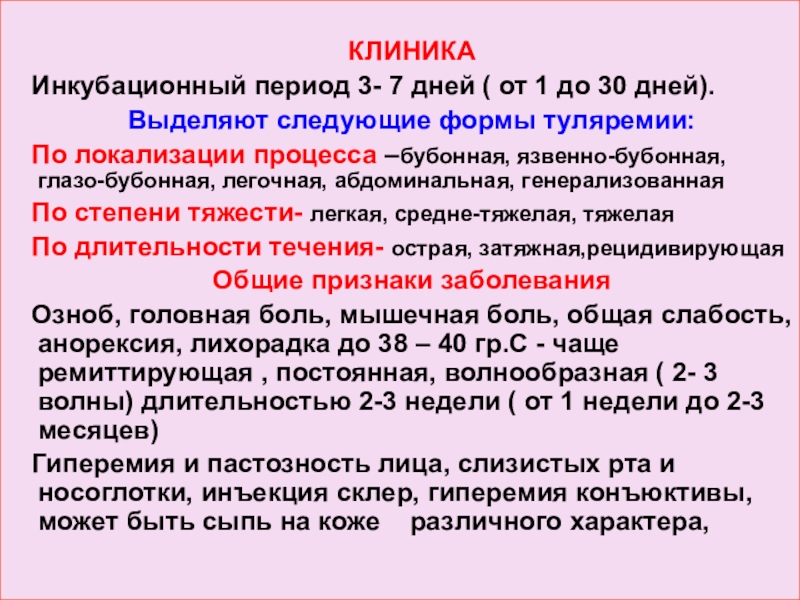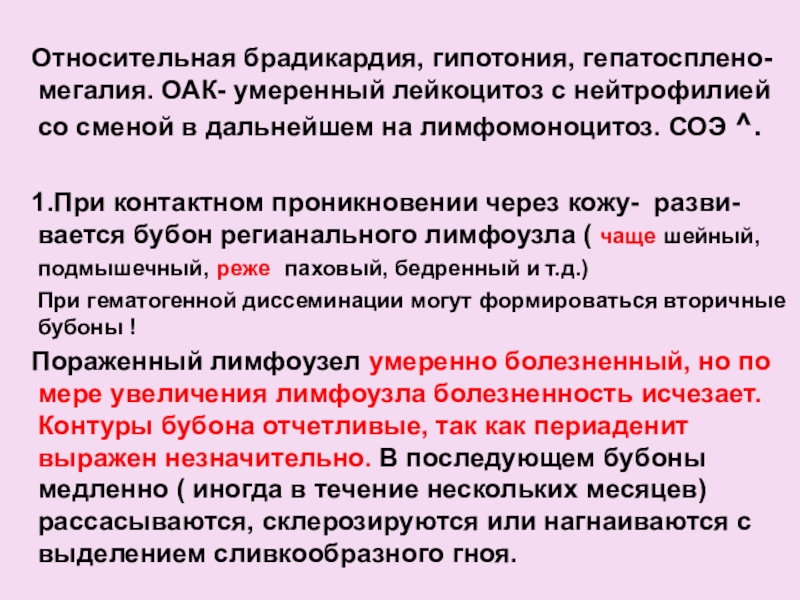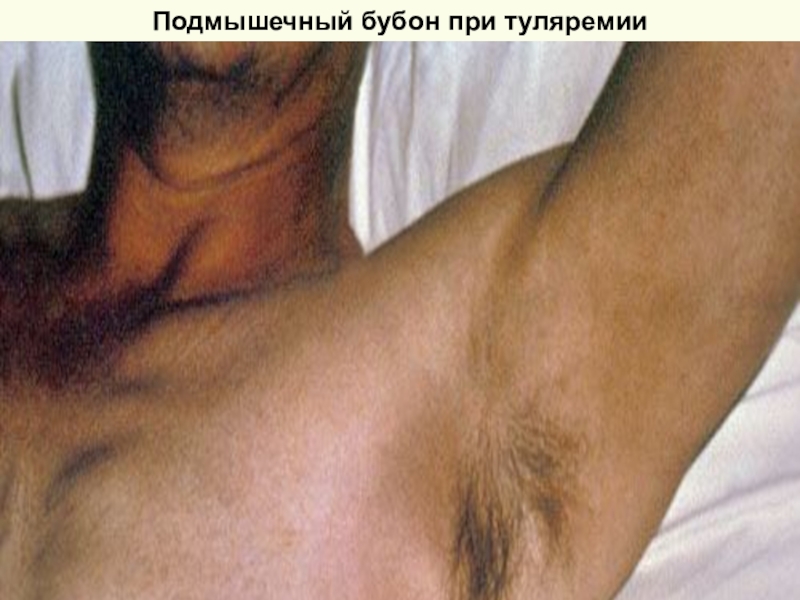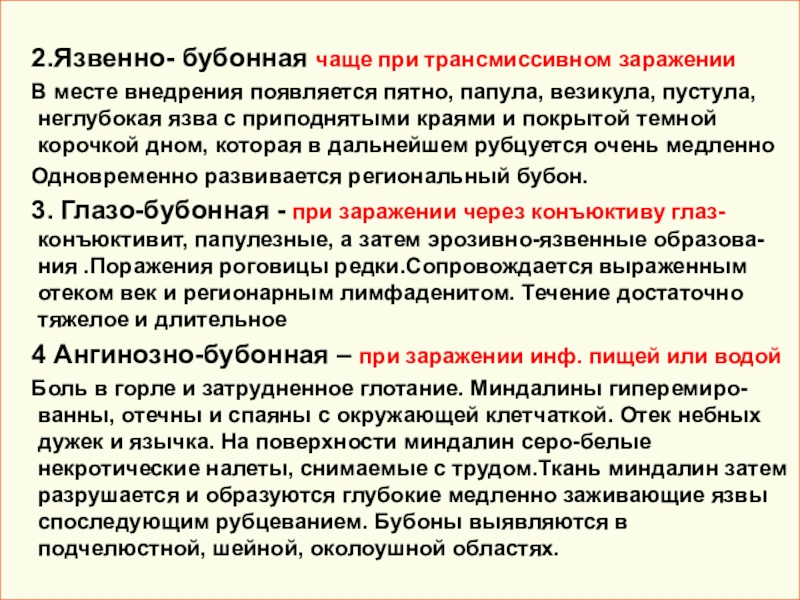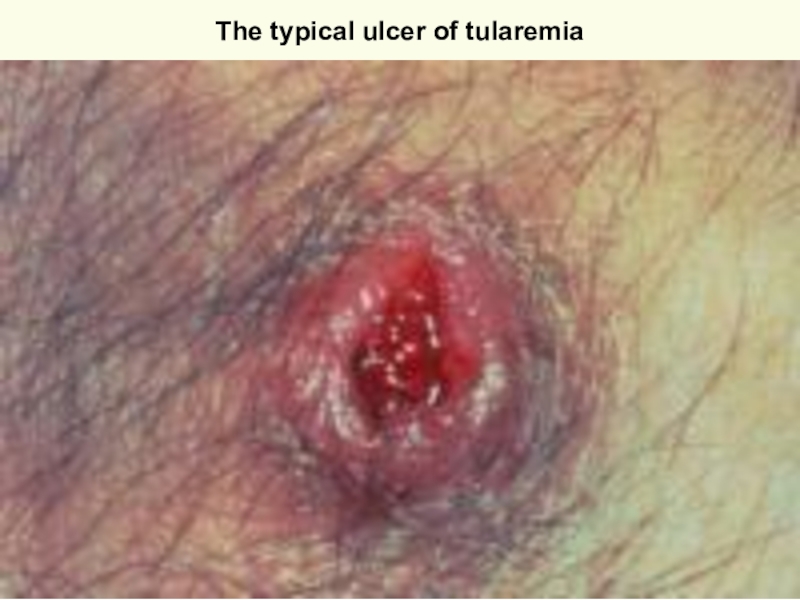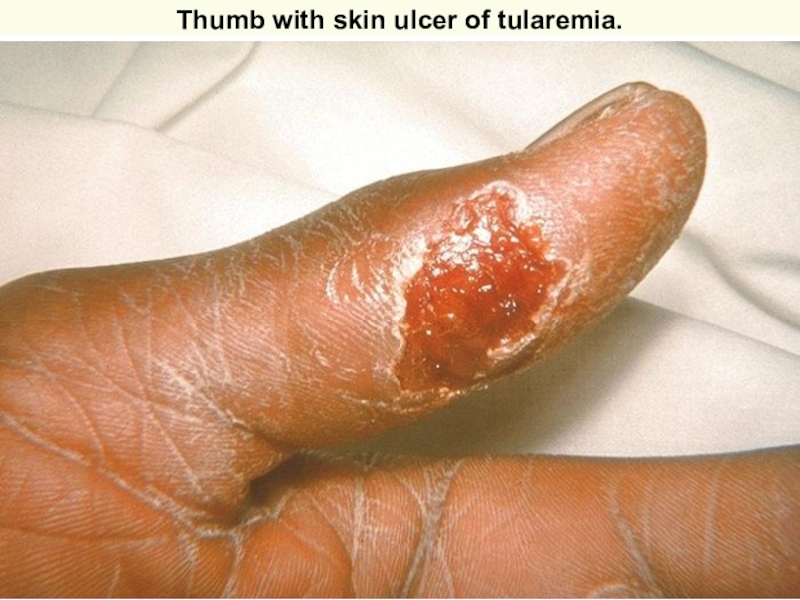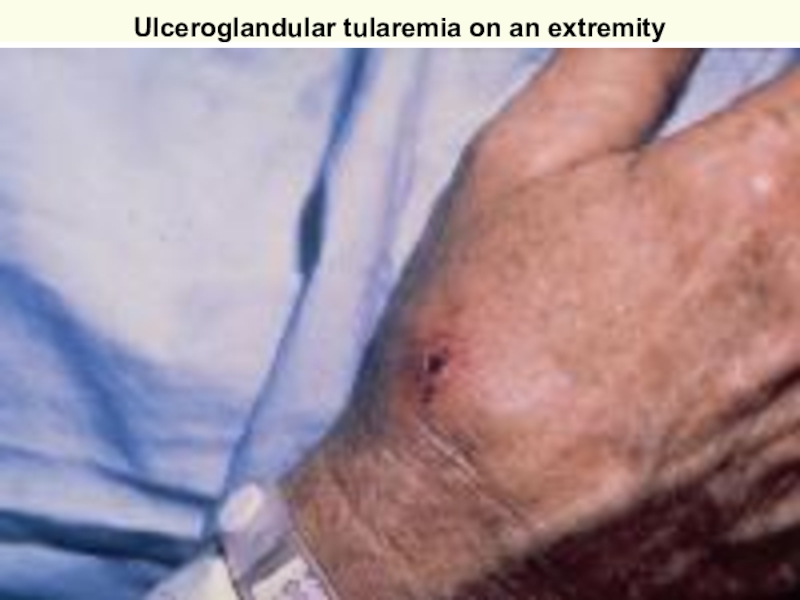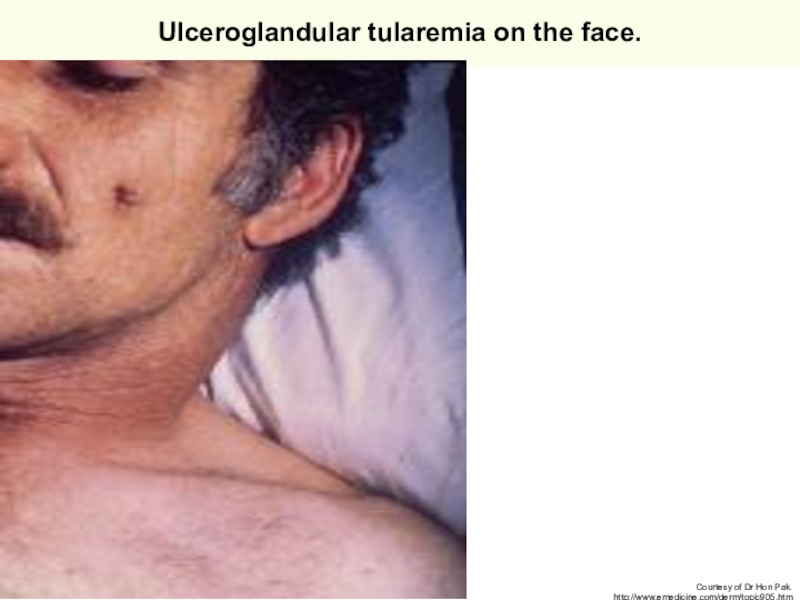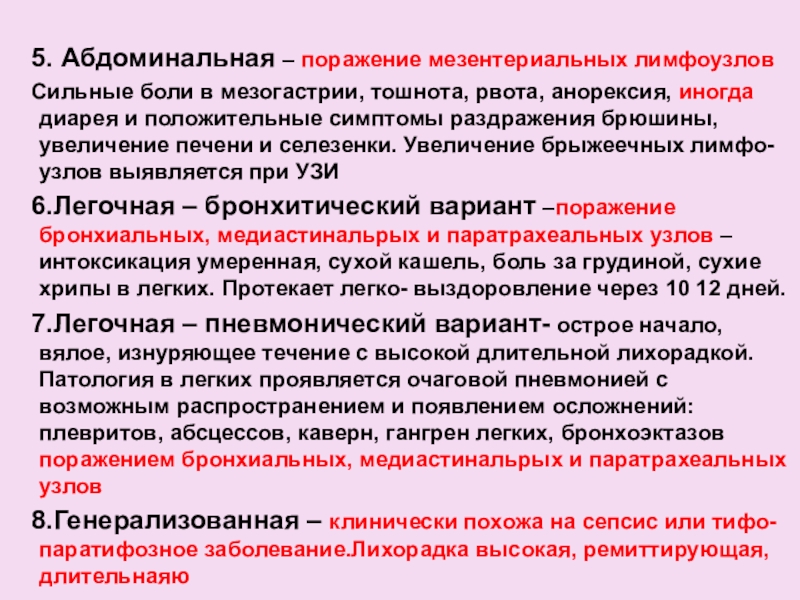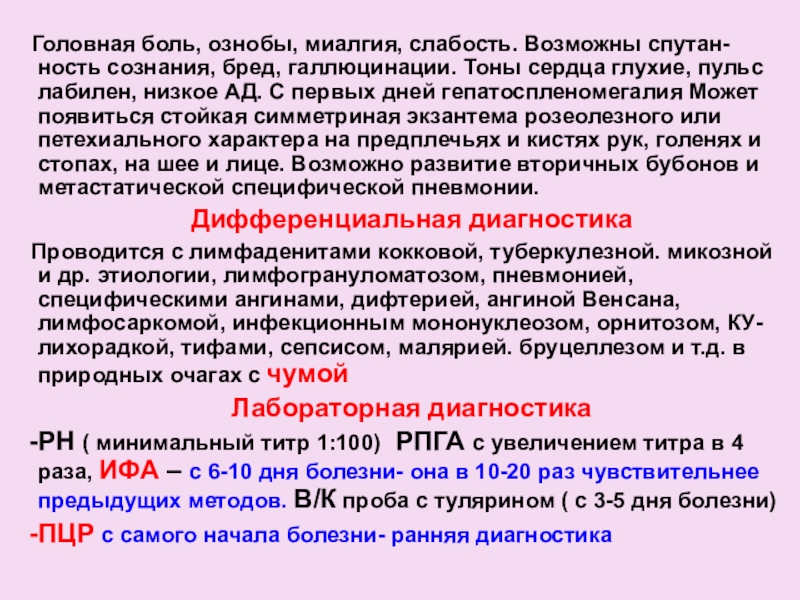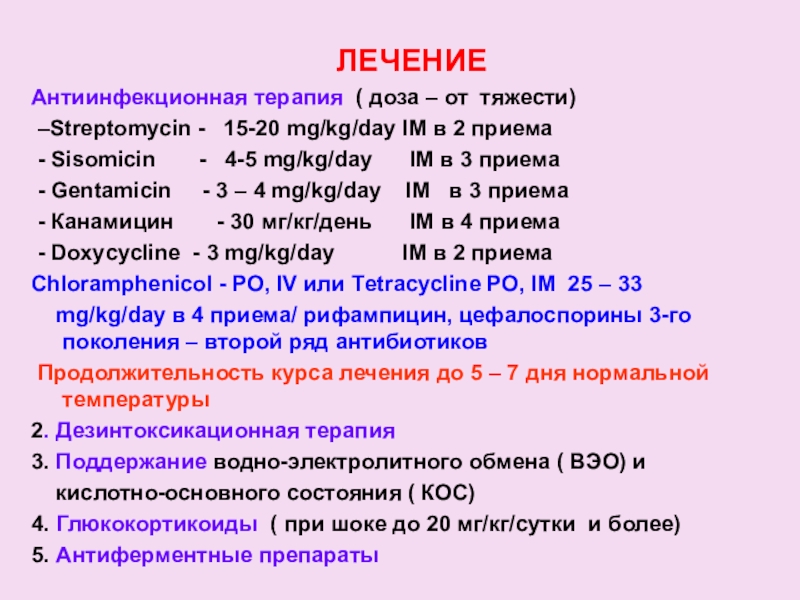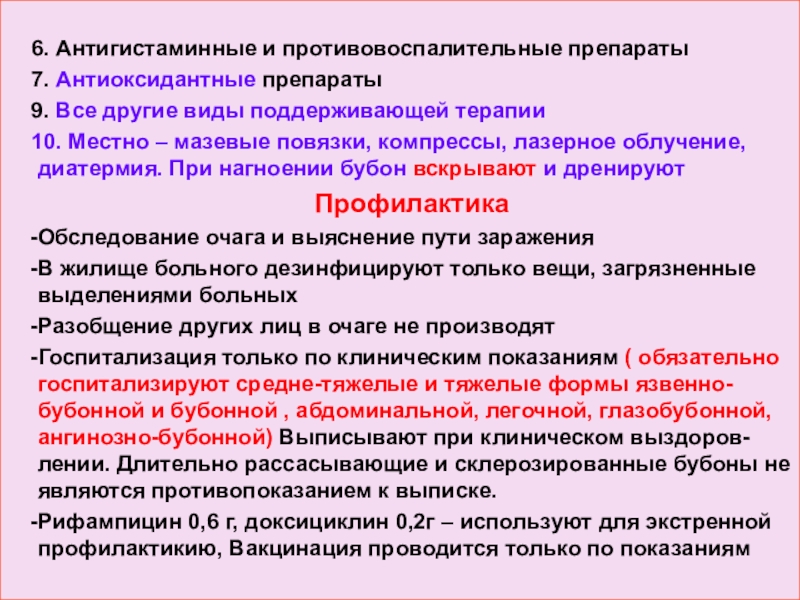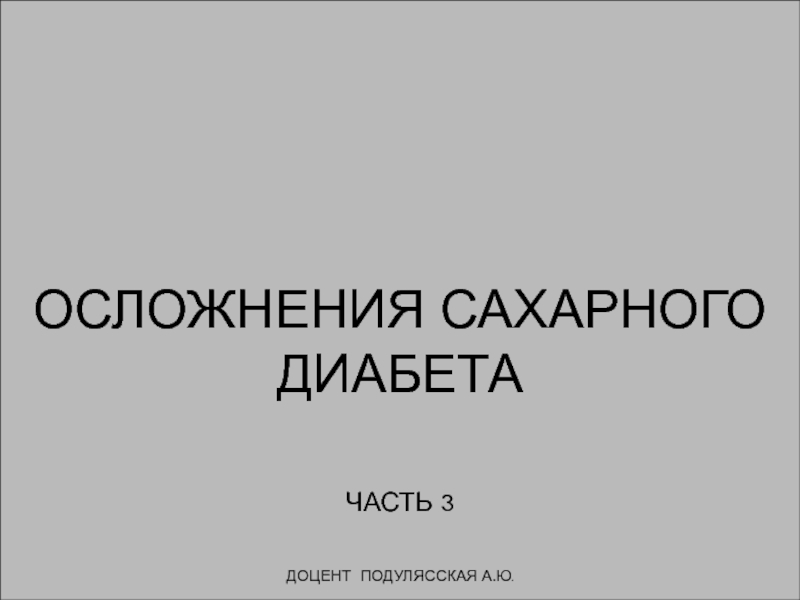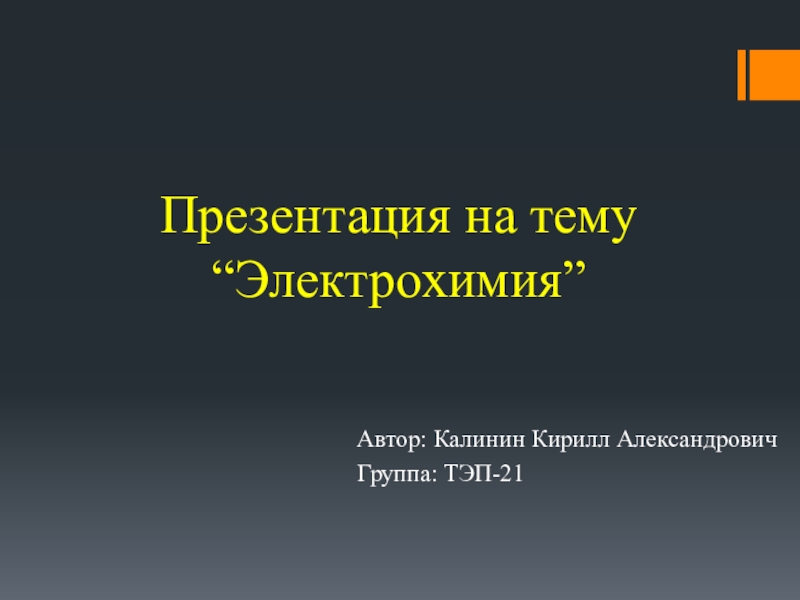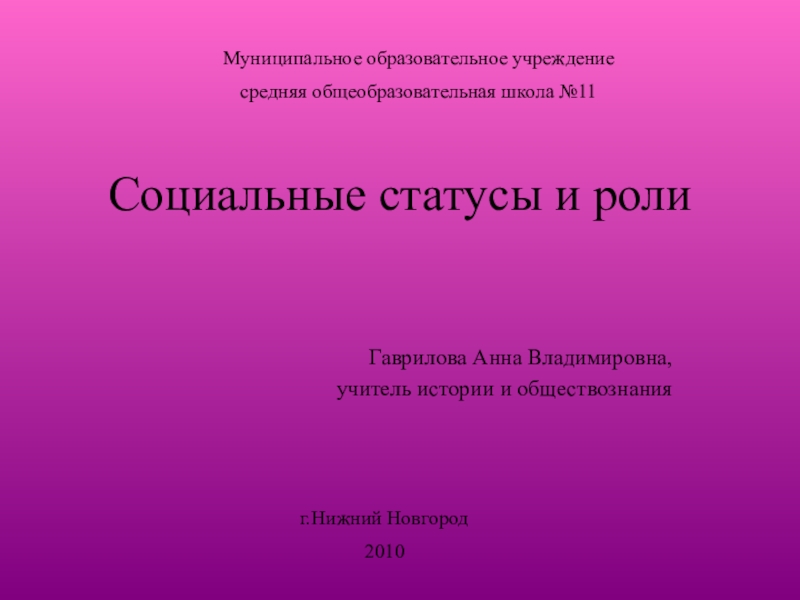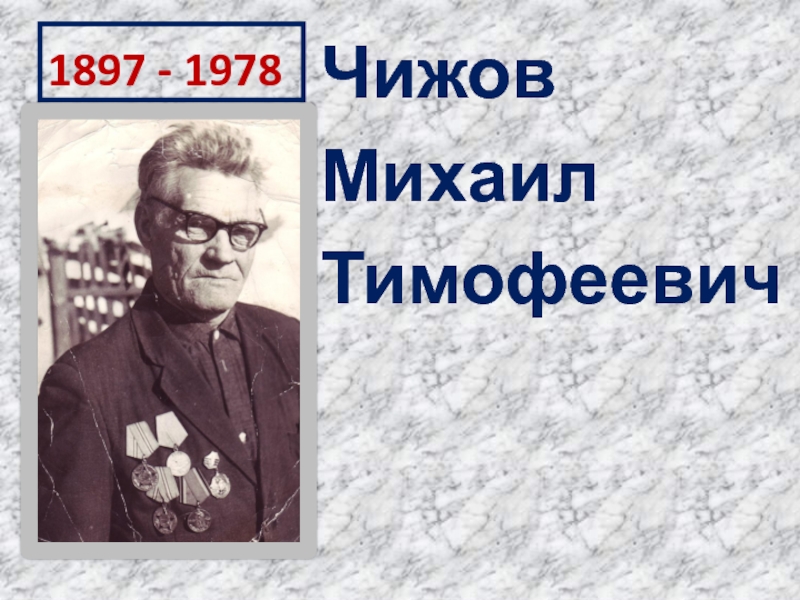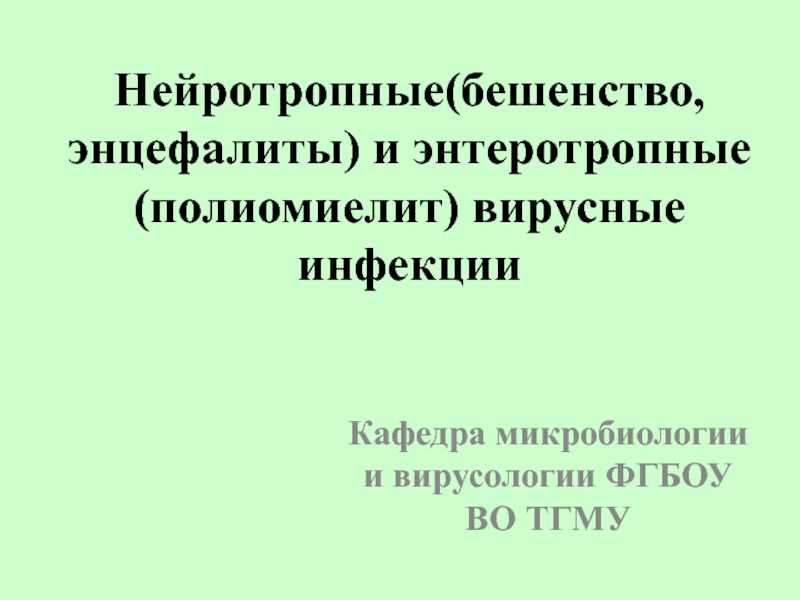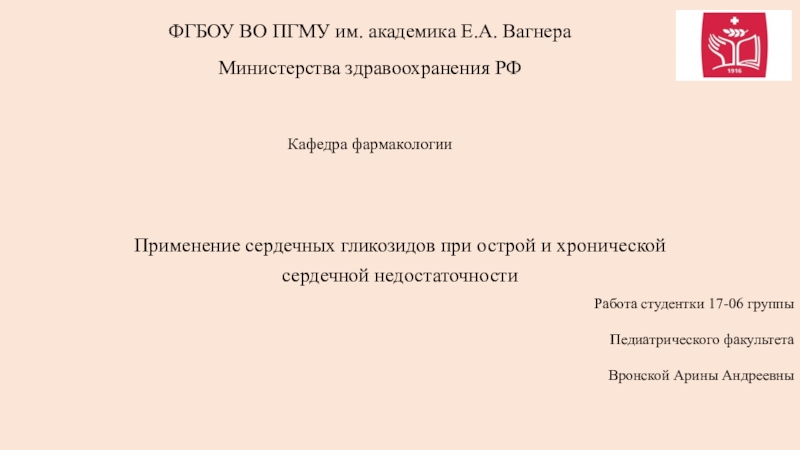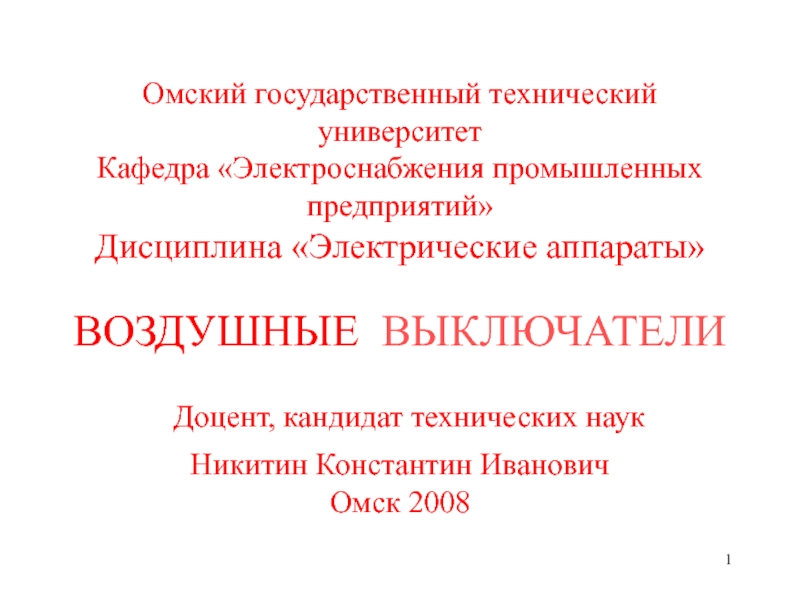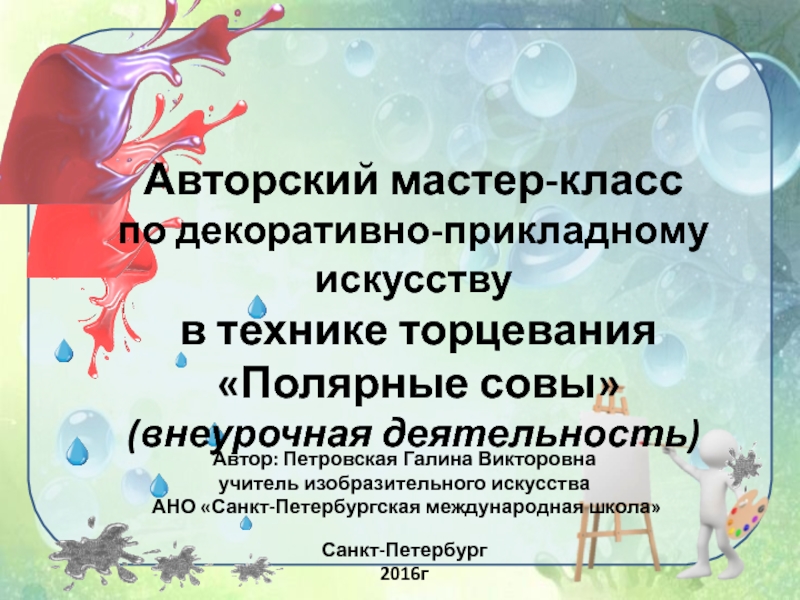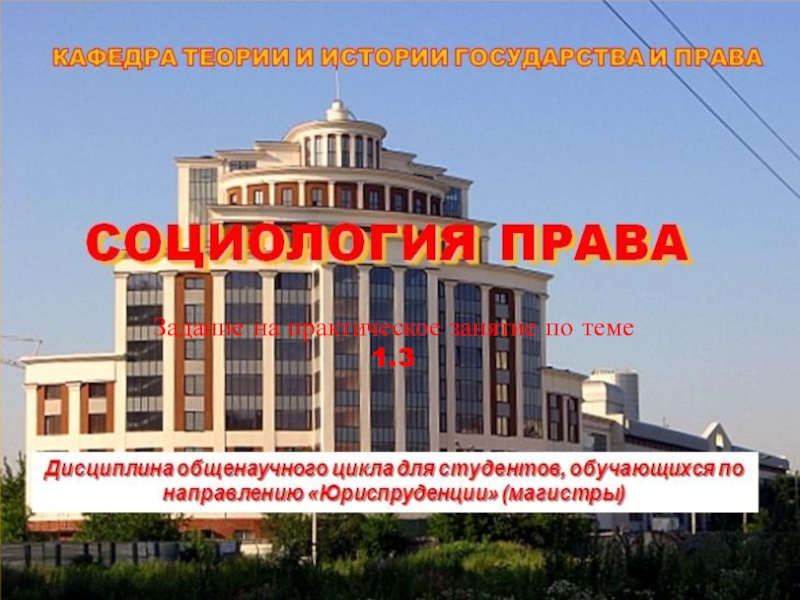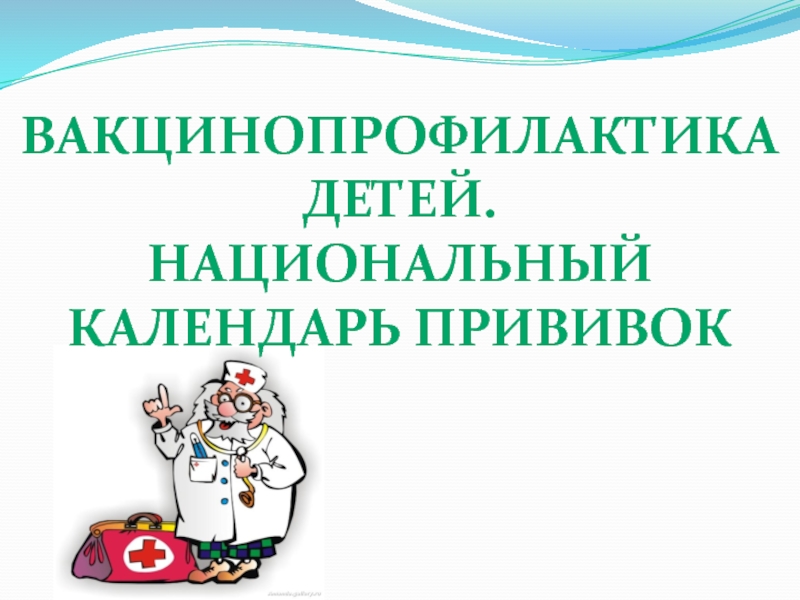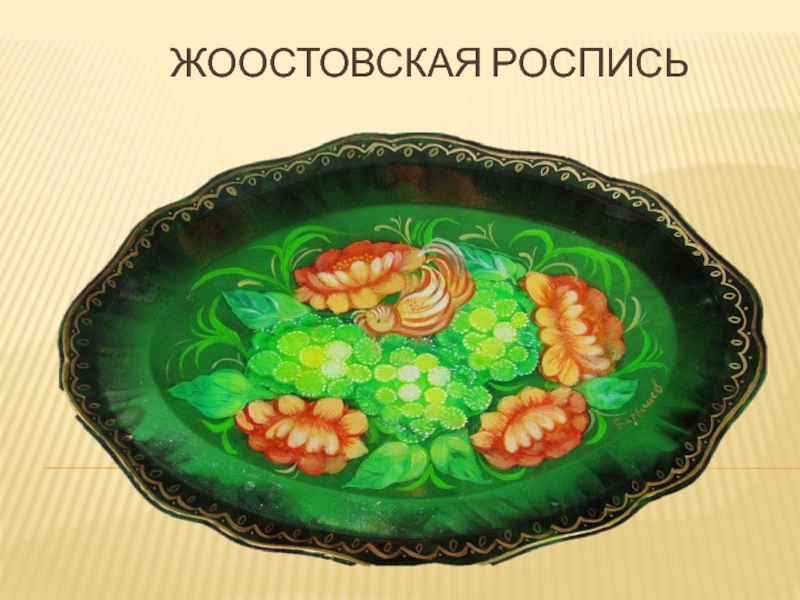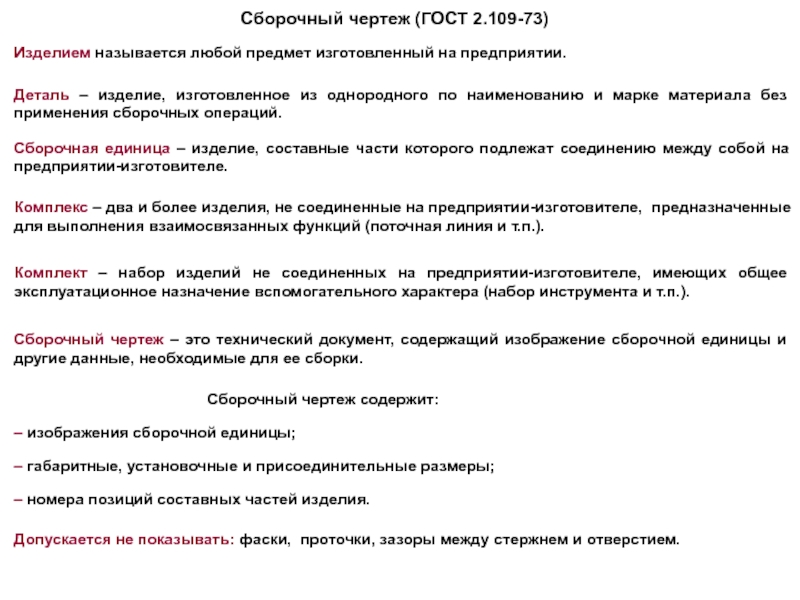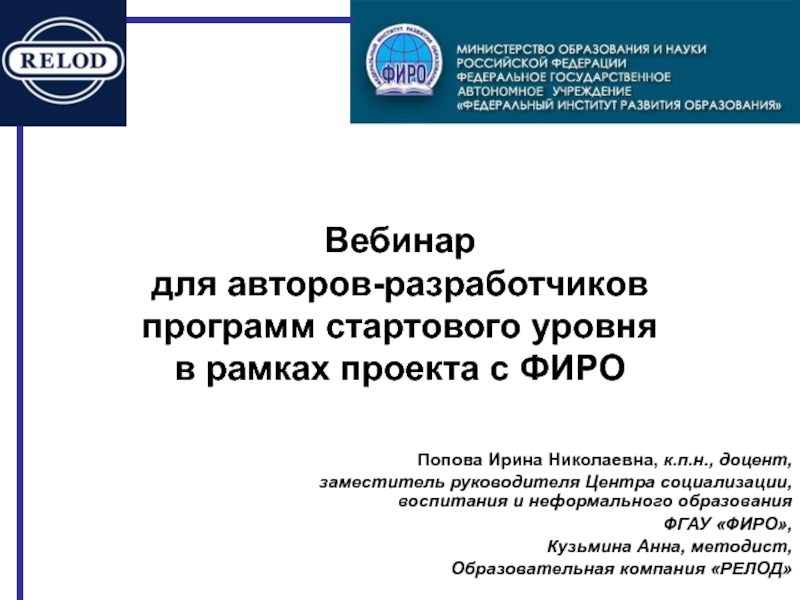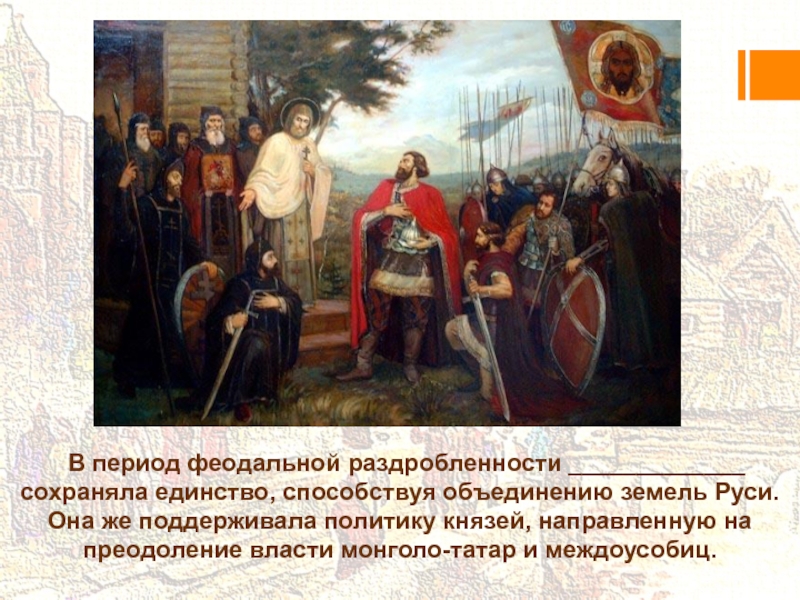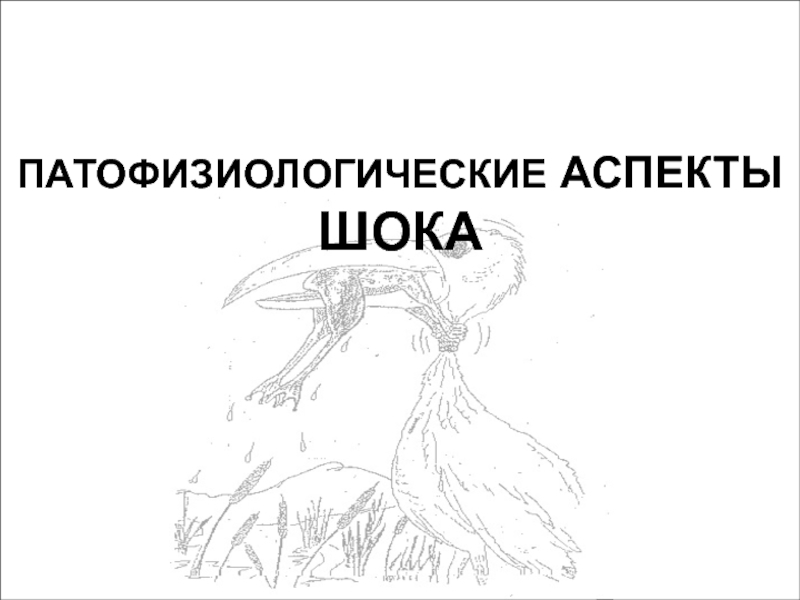Слайд 1
Quarantine and especially dangerous
Illnesses
In group of quarantine infections
(plague, cholera, hemorrhagic fevers ( yellow, Marburg, Lаssа, Ebоlа,) are
included the infectious diseases described by a high contageousness, a serious clinical picture and a high lethality.
A natural smallpox liquidated but cases of disease of people are studied by a smallpox of monkeys.
Слайд 2
Plague (pestis, black death)
Identification: the acutest, naturally-focal, trans-missible
disease characterized by: high fever, exitation, septicemia with toxemia, mental
confusion, prostration, shock, delirium or coma , sero-hemorrhagic inflammation in lymphatic system, lungs and other bodies.
Without well-timed antiinfectious therapy gives a high mortality, justifying one’s the name - pestis (death)
Слайд 3
Ancient illness animal and man:
- The VIth сentury
of AD - «Justinian the plague » - has perished
100 million of the people in the world
- The XIVth century of AD - « the black mors » - has perished
75 million of the people in the world - In Venice all ships, entered in harbour, have to a quarantine in a roadstead (40 days)!
1894 - from China (the bubonic plague) > has perished
15 million of the people in the world
- 1894 - detection of the infectious agent (A.E.Yersen S.Kitosato)
- 1897 - the carrier of a plague ( rat’s flea ) is detected
- 1912 – Д . К. Заболотный - has developed doctrine about natural sources of a plague
- 1897. В.А. Хавкин has created the first vaccine against of a plague
1994 - the flashout of a pneumonic plague in India
( mortality 25%)
Слайд 4
ETIOLOGY
Y. pestis ( F. Enterobacteriaceae. K. Yersinia) – this
is oval rod by a size 0.3 – 0.7
on 1- 3 microns, has a gentle capsule, spores will not derivate.
Gram –negative. They good and originally (bipolar) are colored with all aniline stains.
Are capable to be multiplied in limits from 0 up to 45 d.C, but optimal temperature for grow is from 18 up to 34 d.C.
They are saved in fleas 396 days and in ticks 509 days.
at temperature from 0 up to 15 d. C- temperature inside of the cargo containers.
In corpses perish fast, but in a bone marrow are saved durably!
Outside of an organism perish fast but at freezing point survive 7-12 months
Слайд 7
Pleomorphism is very common in this species and in old
cultures, involution forms are seen :
Cocoid
Club shaped
Filamentous
Giant forms
Pleomorphism is enhanced
in solution containing 3% Sodium chloride
The microorganism is very stable in the environment, survives up to :
5 months in death rodents at freezing point.
7 months in human cadavers at freezing point.
several days to 5 months in sputum
40 days in pus.
3 months in water.
Слайд 8
At warming up to 70 d.C perish in 10
minutes and at
boiling in 1 minute.
Are sensitive to UVL and concentrated disinfectants was being inactivated through 1- 5 minutes.
The pathogenic factors are: exo and endotoxins (which part is enzymes):
- hyaluronidase - enlarges permeability of tissue
barriers
- the activator of plasminogen - protein which interferes to deposition of a fibrin in the inflammation centers that promotes the dissiminations of the agent
are reduced by coagulating a blood
inactivates components С3b and С5а of a complement
Слайд 9
the coagulase- promotes form of thrombuses with subsequent by violation
of microcirculation in tissues
- mouse’s toxin - at introduction mice
in dose 1 mg- results
them to death, causing a shock
- antiphagins:
а) encapsulated glycoproteinic of components - has no by toxic operation but impede to a phagocytosis, facilitating to distribution yersinias in an organism. Has immune by properties
в) proteinic fraction V and lipoproteinic fraction W- antiphagocytic operation and stimulation of endocellular grow yersinias
Слайд 10
- the hemolysin - intensifys a hemolysis of erythrocytes
- bacteriolysins: pesticin 1 and pesticin 2- immunogenic
and bactericidal operation
- other toxic components (more than 20)
EPIDEMIOLOGY - distinguish:
- natural sources - 300 sorts rodents and 120 sorts fleas
support circulation yersinias,
but majority carriers are less:
- 3 sorts of marmots,
- 4 sorts of ground-sqirrels,
- 5 sorts of sanders,
- 1 sort of squeakers
- 3 sorts of rats.
- less often - jerboas, foxs, camels.
Слайд 11
Epidprocess among rodents proceeds as enzootic or
epizootic.
At enzootic - the agent permanently circulates among
rather steady against a plague local rodents
lethality among them is insignificant,
the people attending the center of a plague are seldom
sick!!!
At epizootic – the agent circulates among highly
sensitive to yersinias rodents:
- lethality among rodents very high
- probability of infection of the people attending the center
of a plague is very likely!
Слайд 12
In urban the sources (synonyms- port’s, rat’s, ship’s plague)
the main role belongs rats:
grey,
black,
red and
them fleas:
- Xenopsilla cheopsis - black rats
- and (Ceratophillus fasciatus - grey rats).
After death animal, infected flea moves on new animal and initiates to blood sucking, but to this time its a stomach and prestomach are already filled yersinias and before each feeding it is forced to empty prestomach on a skin animal, which then penetrated in wounds from a stings flea at scratching
Слайд 13
The plague can be transmitted and other ways:
-
contact way – at taking of hides and cuting of
carcasses
of animals
- nutritional way - through the polluted food-stuffs
- by an aerogenic way
Epidemic of a plague usually develops in 3 stages:
1 stage: the sick rodent >infected flea > healthy rodent -
zoonosis
2 stage: infected flea > man - bubonic form -
anthropozoonosis
or pneumonic form - anthroponosis
3 stage: the sick man (pneumonic form) > healthy man -
anthroponosis
Слайд 21
The patient with the pulmonary form represent most danger for
the surroundings.
The patients with the bubonic form is dangerous
for the surroundings only at presence the fleas!!
From the country in the country the plague is transmitted:
- patients with the mild forms of disease or incubation
interal
- cargo containers (infected fleas, ticks, rats)
- ships, planes, trains (infected the rats and them the fleas)
Susceptibility to a plague almost 100 %. The men in 2 times are more often sick than the women is especial in the age of up to 25 years (65 %)
Слайд 22
PATHOGENY and PATHOMORPHOLOGY
Yersinias after penetrated through a skin or mucous
in the lymphatic system of a skin adapt, not stopping
reproduction (create colony)
2. Then not causing a lymphangitis will penetrate into regional lymph nodi, which are fast enlarged and are consolidated being transmuted in buboes of 1st order.
If yersinias in them are not delayed - the buboes 2nd and 3rd orders are shaped
3. If the lymph nodi could not delay advance yersinias there occurs a hematosepsis with bring in any body and its damage (meningitis, secondary pneumonia, DIC, TIS etc.)
Слайд 23
4. At aerogenic infection the primary pneumonia with subsequent the
hematosepsis and death of the patient within the days develops.
5.
The response of tissues of an organism to implantation of the agent appears by a serous hemorrhagic inflam-mation with the subsequent necrosis and fusion.
The necrotic focuses are found out in lymph nodi, spleen, liver etc. for perished. At DIC - hemorrhage are found out in all bodies
Слайд 24
CLINIC
The incubation interval at a bubonic plague from 2
to 6
days,
at the pneumonic form it is shortened from 1 hour to 72
hours
Allocate the following forms of a plague (A 20):
- bubonic form A 20.0
- cellulo-cutaneus the form A 20.1
- pneumonic form A 20.2
- meningial the form A 20.3
- septic form A 20.7
- other forms (abortive) A 20.8
- plague not verificated A 20.9
Слайд 26
The dermal form
in a place
of implantation occurs a hyperemia and infiltration, which fast passes
stages:
the papule > vesicle >pustule >carbuncle, which is transmuted into a ulcer by a diameter 1 - 3 sm with uplifted edges, hard and very morbid bottom, covered with sanguinous contents.
The ulcer always single, can become covered dark scab.
Develops very fast, but heals slowly!!
More often meets as the cutaneous-bubonic form.
The roseolas, petechia, pustules, carbuncules on a skin can appear at any clinical form as a result of a hematosepsis, but they are SECONDARY!!
Слайд 30
The bubonic form
- starts acutely, without a prodrome.
- chill and fast rise of temperature till 38-40d.C
-
strong headache, giddiness, myalgia
pain in the field of a formatived bubo
anorexia, nausea. vomiting
- is exited or is depressed, speech and the thoughts are
braked, verbal the contact difficult
Objective:
- face swelling and hyperemia, feverish brilliance of the
eyes, tachypnea up to 30 - 40 one minute
- absolute tachycardia, hypotonia, pulse soft
- the tongue is covered by dense white fur
- signs of a damage a CNS down to a psychosis
Слайд 31
Features of buboes at a plague:
- the damage of
lymph nodi starts with pain, without local
signs
of a lesion of a skin above them and lymphangitis
- adenitis and periadenitis shape conglomerate from lymph
nodi (bubo) without legible outlines with first days of
illness, skin above which does not gather in fold
- at palpation the induration at centre of a bubo is defined
and jelly-like edema on edges
- The creation of buboes occurs fast (hours), but at
fulminating current they can be small.
At long-lasting illness- more large bubo
Слайд 32
- the buboes of the 2nd and the 3rd
order proceed without a
periadenitis
- in 95
% of cases the buboes are single, but in 5 % of
cases can to be multiple
- inguinal, femoral and axillary lymph nodi are affected more often
- at damage of cervical and axillary lymph nodi to often
the complications (pneumonia, meningitises) develop
Without antiinfectious therapy the mors occurs through 3 - 5 days in 60 - 90 % of cases. At usage antibiotics the mortality does not exceed 10 %
Слайд 36
The pneumonic form of a plague
Differs by extremely rapid current but the signs of a
damage lungs in a start of disease can be weakly
expressed down to lethal outcome occurring frequently
within the first day from a beginning of disease.
Except for chill, fever, headache, myalgia, arthralgias
the disease appears by a nausea, obstinate vomiting,
abdominal pains, diarrhea with admixture of blood, hemorrhagia on a skin and mucous, but the main pathological process develops in lungs and has the following characteristic features:
Features of a defeat lungs at a plague:
in clinic a syndrome of an intoxication and always
prevails over by a pneumonia!!
Слайд 37
- tachypnea it is revealed for all patients and always
not
matches to an expressiveness of the process
in lungs
in a start of disease occasionally it is possible to reveal
dry rales in lungs or the hard respiration, but at X-ray is
detected focal, confluent or croupous pneumonia
- dullness of a sound and moist rales occur since the
second day of illness
Cough with a sputum - most characteristic sign !
The sputum at once as dense slime. then becomes
mucopurulent, then with impurity of a blood ! Volume
sputum is enlarged in accordance with weighting a state
Слайд 38
- More often proceeds as pleuropneumonias with strong
by pains in a thorax, is especial at an inspiration
- Is always accompanied by a toxi-infectious shock
with delirium and psychosis (mania of flight)
- Is always accompanied hepatospleenmegaly
- Is accompanied by increase only peritracheal
and peribronchial of lymph nodi (are detected more often
after death of the patient)
- forecast unfavorable, if antibacterial the therapy started
after 18 hours from first signs of ill - mortality reaches
100 %)
Слайд 41
The septic form of a plague
- initially develops
only for 1- 3 % of cases, but any form
of a plague can be completed by a secondary hematosepsis
Proceeds very repidly : a fever, headache, exicitation and delirium from the first hours, sometimes with clinic of a meningocephalitis, with a hemorrhagic syndrome (micro and macrohemorrhage, bleeding from many bodies) with the expressed toxi-infectious shock, with fast increase of cardiovascular unsufficiency and death of the patient.
Even the well-timed assignment of antibiotics very seldom results in convalescence. A common duration of illness from 1 to 3 day.
Слайд 42
Differential diagnosis:
The dermal form (antrax, tularemia, malleus)
The bubonic
form (purulent lymphadenitis, tularemia,
lymphogranulomatos, lymphoreticulosis)
The pneumonic form
(antrax, hypertoxical influenza,
hemorrhagic fevers, croupous pneumonia)
- The septic form (fulminant bacterial sepsis, hemorrhagic
fevers, tropical malaria, meningococcal
sepsis)
Слайд 43
Differential diagnostics with a tularemia:
The dermal form - a minimum
intoxication, sluggish
creation of a ulcer (days), small painfulness
of bottom
ulcer, lymphangitis and regional lymphadenitis
The pneumonic form - moderate intoxication, dry tussis
without a sputum, X-ray - signs interstitial pneumonia
The bubonic form - is more often a damage of lymph nodi
upper half of trunk, moderate or small them
morbidity, inappreciable periadenitis, moderate
Intoxication, sluggish development of the process in
lymph nodi (days)- instead of hours as at a plague)
Слайд 44Francisella tularensis bacteria stained with methylene blue
Слайд 45Thumb with skin ulcer of tularemia.
Слайд 47Ulceroglandular tularemia on an extremity
Courtesy of Dr Hon
http://www.emedicine.com/derm/topic905.htm
Слайд 48Ulceroglandular tularemia on the face.
Courtesy of Dr Hon Pak.
http://www.emedicine.com/derm/topic905.htm
Слайд 50
LABORATORY DIAGNOSIS
Microscopic the method plays the important role in
express diagnosis – detection Gram (-) rods in punctates of
buboes, contents of ulcers, in a blood, in a sputum and slime from a stomatopharynx, in vomitive masses and feces, in CSF, on subjects enclosing the patient, painted «bipolar"
- IFM - improves etiological diagnosis plague
- neutralization test of antibodies,
- precipitation test on reference agarinic slices
- accelerated growth yersinias on the enrichment nutrient
medium
PCR - even more often began to be usaged in the latter time
Will necessarily be carried out bacteriological inspection (plain agar or broth).
Слайд 51
- The accelerated biological test (intraperitoneal infection together with
glucocorticoids and egg protein) - is especially shown at small
concentration of the agent or at reduced its virulence
- The immunological inspection (PHAt, RNt, ELISA ) has no deciding value because of rapidity of illness, but has the important value for retrospective diagnosis
- The speciment of a material will be carried out in a protective costume 1st type such as in special containers and with accompanying is routed to laboratory of a department– ( especially dangerous infection)
TREATMENT of PLAGUE
The antiinfectious therapy - starts immediately!
- streptomycin – 20 - 30 mg/kg/ IM bid
- sisomicin – 2 – 2.5 mg/kg/ IM bid
Слайд 52
- Gentavicin - 2 – 2.5 mg/kg
IM bid
- Doxycycline – 1.5 mg/kg
PO bid
- Chloramphenicol - PO, IV or Тetracycline PO, IM
12- 16 mg/kg/ qid (dose - from gravity)
Duration of course of treatment 7 - 10 days!!!
2. Desintoxic therapy
3. Maintenance hydro-electrolitic and acid-base state
4. Glucocorticoids (at a shock up to 20 mg.kg.day and more)
5. Antiferment drugs
6. Anticoagulants or coagulents - depending on a phase DIC
7. Antioxidant drugs
9. All other sorts of a maintenance therapy
Слайд 53
Conditions of a discharge from hospitals:
At the bubonic
form - complete convalescence + two negative seedings of a
puncture of a bubo with an interval 2 days (but not earlier than 4 weeks from a beginning of illness)
At the pulmonary form complete convalescence + 3 negative seedings with an interval 2 days of a sputum or slime from a stomatopharynx (but not earlier than 6 weeks from a beginning Illnesses)
Emergency prophylaxis of a plague:
Streptomycin 15/mg/kg/ IM bid, Rifampicin 0.3g PO bid
(duration of treatment 5 days)
Tetracycline 0.5 g PO tid Doxycycline 200 mg PO one time, Ampicilli 1 g PO tid at antibiotico-resistance- Хиноксидин 0, 25 g PO tid
(duration of treatment 7 days)
Слайд 54
Antiepidemic measures in the center of a plague:
The information about
falling sick or suspicious transmitted immediately in capital, and then
in a WHO
The quarantine is declared only on decision of an emergency anti-
epidemic commission
- Will be carried out epidemiologycal inspection with by revealing of a source and contact persons
The hospitalization falling sick will be carried out contact (all contact recive emergency antibiotico-prophylaxis) and suspicious on disease by a plague of the persons
The deratization, disinfection, disinfestation will be carried out
The vaccination Epi.Cut. or Sub.Cut. alive attenuated by a vaccine the type Е, with a revaccination in 6 months (in endemic the sources will be carried out, the hunters, working with the agent ) At massive infection - a vaccination does not safeguard from disease!
Слайд 55
ТУЛЯРЕМИЯ ( TULAREMIA )
Острое инфекционное природно-очаговое заболевание
с поражением лимфатических узлов, кожных покровов, иногда глаз, зева и
легких и сопровождающееся выраженной интоксикацией.
Возбудитель: Francisella tularensis – неподвижные Грам (-) аэробные капсулированные коккобациллы (чаще всего), но обладают выраженным полиморфизмом. Имеют О и V антигены.
Растут только на специальных средах, но положительный результат получается редко.Хорошо сохраняются вне организма хозяина. При 4 гр.С – около месяца, на соломе или зерне при 0 гр.С – до 6 месяцев, на шкурах животных – более месяца, но при воздействии высокой температуры и дезинфектантов- погибают быстро.
Выделяют 3 подвида:
неарктический ( африканский)
среднеазиатский
голарктический ( европейско-азиатский) с 3 биаварами:
японским, эритромицин-чувствительным и эритромицин-
устойчивым
Слайд 56
TULAREMIA
Acute infectious naturally-focal disease with a
lesion of lymphatic system, dermal integuments, sometimes of eyes, fauces
and lungs and accompanying by the expressed intoxication.
The infectious agent: Francisella tularensis - motionless Gram (-) aerobic capsule coccobacilli (more often), but have the expressed polymorphism. Have O and V antigenes.
Grow only on special mediums, but the positive take turns out seldom. Are well kept outside of an organism of the host. At 4 гр. C- about one month, on straw or grain at 0 гр. C - about 6 months, on skins animal - more than month, but at influence of high temperature and disinfectants - perishes quickly.
Evolve 3 species:
Not Arctic (African)
Central Asian
Golarctic (Eurasian) with 3 biovariants: Japanese,
erythromycin - responsive and erythromycin steady
Слайд 57Francisella tularensis bacteria stained with methylene blue
Слайд 58
ЭПИДЕМИОЛОГИЯ
Туляремия – распространенное природно-очаговое заболевание умеренного климатического пояса Северного полушария.
Типы
очагов – лесной, степной, лугово-полевой, пойменно-болотный, в долине рек и
т.д.
Чаще болеют взрослые ( мужчины в 2-3 раза чаще , чем женщины)
На лето и осень приходится 80% заболевших, среди которых преобладают сельхоз. рабочие, охотники, рыбаки, туристы и т.д.
Резервуар и источник инфекции – многочисленные виды диких грызунов, зайцевидных, птицы, собаки, овцы, парнокопытные .
Больной человек не опасен для окружающих.
Механизмм передачи –множественный. Чаще трансмиссивный
трасмиссивный- иксодовые клещи, комары, блохи, слепни и т.д.
контактный- снятие шкур, разделка туш, сбор павших грызунов
алиментарный- вода и пища, загрязненная грызунами.
Восприимчивость людей практически 100%
Слайд 59
EPIDEMIOLOGY
Tularemia – propagated naturally-focal disease of a moderate climatic girdle
of Northern hemisphere.
Phylums of the centres – wood, steppe, lugovo-field,
pojmenno-marsh, in a valley of the rivers etc.
To brake are ill(sick) adult (men in 2-3 times more often, than women)
For the summer and autumn 80 % of the diseased among which prevail(dominate) сельхоз are necessary. Workers, hunters, fishermen, tourists etc.
The reservoir and radiant of an infection contamination – numerous views of feral(natural) gnawers, зайцевидных, auks, dogs, sheep(sheeps), artiodactyl.
The sick person is not hazardous to associates.
Механизмм transmissions(transfers)-plural. More often the transmissible
trasmissivnyj - иксодовые a tong(ticks,mites), mosquitos, fleas, gadflies etc.
Contact - putting off(taking out) of skins, dressing operations, the collecting of the gorged gnawers
Alimentary(Nutritional) - water and the nutriment(nutrition) polluted by gnawers.
Sensibility of people practically 100 %
Слайд 60
PATHOGENY
Bacteria penetrate through a skin, mucosas of eyes, respiratory tracts,
GASTROINTESTINAL TRACT.
At a puncture of insects-is frequent the primary
affect – maculae> a papule> a vesicle> a pustule> a ulcer educes.
Having got to lymphatic system – reach a regional lymphonodus in which will propagate, invoking(producing) an inflammation and formation of a primary bybo(bubo).
Their part perishes, liberating an endotoxin which enters(arrives) in blood and invokes(produces) an intoxication. The bacteriemia arises not always.
At entering in blood of a bacterium get to an internals where form specific granulomas with a necrosis at centre.
Formation of granulomas in primary buboes result ins to their pyesis, dissecting with the long-term(long-lived) healing of a canker, but they can склерозироваться or resolve.
Слайд 61
ПАТОГЕНЕЗ
Бактерии проникают через кожу, слизистые оболочки глаз, дыхательных путей, ЖКТ.
При укусе насекомых-часто развивается первичный аффект – пятно> папула >везикула
>пустула > язва.
Попав в лимфатическую систему – достигают регионального лимфоузла в котором и размножатся, вызывая воспаление и формирование первичного бубона.
Часть их погибает , высвобождая эндотоксин, который поступает в кровь и вызывает интоксикацию. Бактериемия возникает не всегда.
При поступлении в кровь бактерии попадают во внутренние органы, где формируют специфические гранулемы с некрозом в центре.
Формирование гранулем в первичных бубонах приводит к их нагноению, вскрытию с длительным заживлением язвы, но они могут склерозироваться или рассосаться.
Слайд 62
КЛИНИКА
Инкубационный период 3- 7 дней ( от 1 до 30
дней).
Выделяют следующие формы туляремии:
По локализации процесса –бубонная, язвенно-бубонная, глазо-бубонная, легочная,
абдоминальная, генерализованная
По степени тяжести- легкая, средне-тяжелая, тяжелая
По длительности течения- острая, затяжная,рецидивирующая
Общие признаки заболевания
Озноб, головная боль, мышечная боль, общая слабость, анорексия, лихорадка до 38 – 40 гр.С - чаще ремиттирующая , постоянная, волнообразная ( 2- 3 волны) длительностью 2-3 недели ( от 1 недели до 2-3 месяцев)
Гиперемия и пастозность лица, слизистых рта и носоглотки, инъекция склер, гиперемия конъюктивы, может быть сыпь на коже различного характера,
Слайд 63
Относительная брадикардия, гипотония, гепатосплено-мегалия. ОАК- умеренный лейкоцитоз с нейтрофилией со
сменой в дальнейшем на лимфомоноцитоз. СОЭ ^.
1.При контактном проникновении через
кожу- разви-вается бубон регианального лимфоузла ( чаще шейный, подмышечный, реже паховый, бедренный и т.д.)
При гематогенной диссеминации могут формироваться вторичные бубоны !
Пораженный лимфоузел умеренно болезненный, но по мере увеличения лимфоузла болезненность исчезает. Контуры бубона отчетливые, так как периаденит выражен незначительно. В последующем бубоны медленно ( иногда в течение нескольких месяцев) рассасываются, склерозируются или нагнаиваются с выделением сливкообразного гноя.
Слайд 65
2.Язвенно- бубонная чаще при трансмиссивном заражении
В месте внедрения появляется пятно,
папула, везикула, пустула, неглубокая язва с приподнятыми краями и покрытой
темной корочкой дном, которая в дальнейшем рубцуется очень медленно
Одновременно развивается региональный бубон.
3. Глазо-бубонная - при заражении через конъюктиву глаз- конъюктивит, папулезные, а затем эрозивно-язвенные образова-ния .Поражения роговицы редки.Сопровождается выраженным отеком век и регионарным лимфаденитом. Течение достаточно тяжелое и длительное
4 Ангинозно-бубонная – при заражении инф. пищей или водой
Боль в горле и затрудненное глотание. Миндалины гиперемиро-ванны, отечны и спаяны с окружающей клетчаткой. Отек небных дужек и язычка. На поверхности миндалин серо-белые некротические налеты, снимаемые с трудом.Ткань миндалин затем разрушается и образуются глубокие медленно заживающие язвы споследующим рубцеванием. Бубоны выявляются в подчелюстной, шейной, околоушной областях.
Слайд 67Thumb with skin ulcer of tularemia.
Слайд 68Ulceroglandular tularemia on an extremity
Courtesy of Dr Hon
http://www.emedicine.com/derm/topic905.htm
Слайд 69Ulceroglandular tularemia on the face.
Courtesy of Dr Hon Pak.
http://www.emedicine.com/derm/topic905.htm
Слайд 70
5. Абдоминальная – поражение мезентериальных лимфоузлов
Сильные боли в мезогастрии, тошнота,
рвота, анорексия, иногда диарея и положительные симптомы раздражения брюшины, увеличение
печени и селезенки. Увеличение брыжеечных лимфо-узлов выявляется при УЗИ
6.Легочная – бронхитический вариант –поражение бронхиальных, медиастинальрых и паратрахеальных узлов – интоксикация умеренная, сухой кашель, боль за грудиной, сухие хрипы в легких. Протекает легко- выздоровление через 10 12 дней.
7.Легочная – пневмонический вариант- острое начало, вялое, изнуряющее течение с высокой длительной лихорадкой. Патология в легких проявляется очаговой пневмонией с возможным распространением и появлением осложнений: плевритов, абсцессов, каверн, гангрен легких, бронхоэктазов поражением бронхиальных, медиастинальрых и паратрахеальных узлов
8.Генерализованная – клинически похожа на сепсис или тифо-паратифозное заболевание.Лихорадка высокая, ремиттирующая, длительнаяю
Слайд 71
Головная боль, ознобы, миалгия, слабость. Возможны спутан-ность сознания, бред, галлюцинации.
Тоны сердца глухие, пульс лабилен, низкое АД. С первых дней
гепатоспленомегалия Может появиться стойкая симметриная экзантема розеолезного или петехиального характера на предплечьях и кистях рук, голенях и стопах, на шее и лице. Возможно развитие вторичных бубонов и метастатической специфической пневмонии.
Дифференциальная диагностика
Проводится с лимфаденитами кокковой, туберкулезной. микозной и др. этиологии, лимфогрануломатозом, пневмонией, специфическими ангинами, дифтерией, ангиной Венсана, лимфосаркомой, инфекционным мононуклеозом, орнитозом, КУ-лихорадкой, тифами, сепсисом, малярией. бруцеллезом и т.д. в природных очагах с чумой
Лабораторная диагностика
РН ( минимальный титр 1:100) РПГА с увеличением титра в 4 раза, ИФА – с 6-10 дня болезни- она в 10-20 раз чувствительнее предыдущих методов. В/К проба с тулярином ( с 3-5 дня болезни)
ПЦР с самого начала болезни- ранняя диагностика
Слайд 72
ЛЕЧЕНИЕ
Антиинфекционная терапия ( доза – от тяжести)
–Streptomycin -
15-20 mg/kg/day IM в 2 приема
- Sisomicin
- 4-5 mg/kg/day IM в 3 приема
- Gentamicin - 3 – 4 mg/kg/day IM в 3 приема
- Канамицин - 30 мг/кг/день IM в 4 приема
- Doxycycline - 3 mg/kg/day IM в 2 приема
Chloramphenicol - PO, IV или Тetracycline PO, IM 25 – 33
mg/kg/day в 4 приема/ рифампицин, цефалоспорины 3-го поколения – второй ряд антибиотиков
Продолжительность курса лечения до 5 – 7 дня нормальной температуры
2. Дезинтоксикационная терапия
3. Поддержание водно-электролитного обмена ( ВЭО) и
кислотно-основного состояния ( КОС)
4. Глюкокортикоиды ( при шоке до 20 мг/кг/сутки и более)
5. Антиферментные препараты
Слайд 73
6. Антигистаминные и противовоспалительные препараты
7. Антиоксидантные препараты
9. Все другие виды
поддерживающей терапии
10. Местно – мазевые повязки, компрессы, лазерное облучение, диатермия.
При нагноении бубон вскрывают и дренируют
Профилактика
Обследование очага и выяснение пути заражения
В жилище больного дезинфицируют только вещи, загрязненные выделениями больных
Разобщение других лиц в очаге не производят
Госпитализация только по клиническим показаниям ( обязательно госпитализируют средне-тяжелые и тяжелые формы язвенно-бубонной и бубонной , абдоминальной, легочной, глазобубонной, ангинозно-бубонной) Выписывают при клиническом выздоров-лении. Длительно рассасывающие и склерозированные бубоны не являются противопоказанием к выписке.
Рифампицин 0,6 г, доксициклин 0,2г – используют для экстренной профилактикию, Вакцинация проводится только по показаниям
